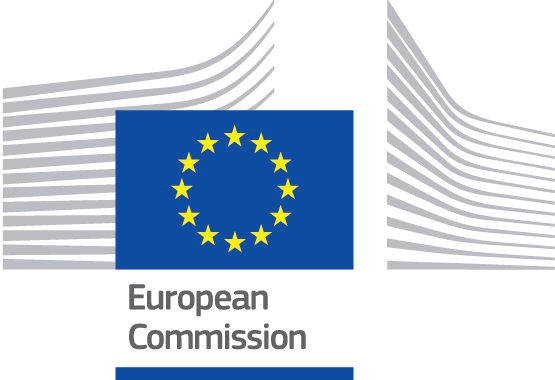The European Union
What it is and what it does

This publication is a guide to the European Union (EU) and what it does.
The first section briefly explains what the EU is.
The second section, ‘What the European Union does’, describes what the EU is doing in more than 40 different areas to improve the lives of people in Europe and further afield.
The third section, ‘How the European Union makes decisions and takes action’, describes the institutions at the heart of the EU’s decision-making process and how their decisions are translated into actions.
The text printed in blue indicates hyperlinks to more detailed information in the HTML and PDF versions of this book.
| HTML | |||
|---|---|---|---|
| This publication is available in the following formats |  |
 |
 |
1 The European Union in brief
The European Union (EU) is a unique economic and political union between 27 European countries.
The EU that we know today has its roots in several treaties signed in the aftermath of the Second World War. The first step was to foster economic cooperation, based on the idea that countries that trade with one another become economically interdependent and so are more likely to avoid conflict. The result was the European Economic Community, created in 1958 with the initial aim of increasing economic cooperation between six countries: Belgium, Germany, France, Italy, Luxembourg and the Netherlands.
Since then, 22 more countries have joined (the United Kingdom left the EU on 31 January 2020) and a huge single market (also known as the internal market) has been created and continues to develop towards its full potential.
What began as a purely economic union has evolved into an organisation spanning many different policy areas – from climate, environment and health to external relations and security, justice and migration.
The EU has delivered more than half a century of peace, stability and prosperity, helped raise living standards and launched a single European currency: the euro. More than 340 million EU citizens in 19 countries now use it as their currency and enjoy its benefits.
Thanks to the abolition of border controls between most EU countries, people can travel freely throughout most of the continent. It has also become much easier to live and work in another country in Europe. All EU citizens have the right and freedom to choose in which EU country they want to study, work or retire. Every EU country must treat EU citizens in exactly the same way as its own citizens when it comes to matters of employment, social security and tax.
The EU’s main economic engine is the single market. It enables goods, services, money and people to move freely. The EU aims to follow suit in other areas like energy, knowledge and capital markets to ensure that Europeans also obtain the maximum benefit from these resources.
The EU remains focused on making its governing institutions more transparent and democratic. Decisions are taken as openly as possible and as closely as possible to the citizen. More powers have been given to the directly elected European Parliament, while national parliaments play a greater role than before, working alongside the EU institutions.
The EU is governed by the principle of representative democracy, with citizens directly represented at the EU level in the European Parliament and Member States represented in the European Council and the Council of the European Union.
Citizens are encouraged to contribute to the democratic life of the EU by giving their views on EU policies during their development or by suggesting improvements to existing laws and policies. The European Citizens’ Initiative empowers citizens to have a greater say on EU policies that affect their lives. Citizens can also submit complaints and enquiries concerning the application of EU law.
As enshrined in the Treaty on European Union, ‘The Union is founded on the values of respect for human dignity, freedom, democracy, equality, the rule of law and respect for human rights, including the rights of persons belonging to minorities. These values are common to the Member States in a society in which pluralism, non-discrimination, tolerance, justice, solidarity and equality between women and men prevail.’
These values are an integral part of the European way of life. Human dignity constitutes the basis of fundamental rights; it must be respected and protected.
Human rights are protected by the EU Charter of Fundamental Rights. These cover the right to be free from discrimination on the basis of sex, racial or ethnic origin, religion or belief, disability, age or sexual orientation, the right to the protection of your personal data and the right to get access to justice.
In 2012, the EU was awarded the Nobel Peace Prize for advancing the causes of peace, reconciliation, democracy and human rights in Europe.
Being an EU citizen also means enjoying political rights. Every adult EU citizen has the right to stand as a candidate for and vote in European Parliamentary elections, whether in their country of residence or country of origin.
The EU is based on the rule of law. All citizens have equal right before the law and everything the EU does is founded on treaties, which are voluntarily and democratically agreed by its member countries. Law and justice are upheld by an independent judiciary. The countries that belong to the EU have given final jurisdiction in matters of EU law to the Court of Justice of the European Union, whose judgments have to be respected by all.
EU Member States and institutions
At the core of the EU are its 27 Member States and their citizens. The unique feature of the EU is that although the Member States all remain sovereign and independent states, they pool together some of their sovereignty in areas where this has an added value.
In practice, this means that the Member States delegate some of their decision-making powers to the shared institutions they have created, so that decisions on specific matters of common interest can be made democratically at the EU level.
Member States of the European Union in 2022

Several institutions are involved in making decisions at the EU level, in particular:
- the European Parliament, which represents EU citizens and is directly elected by them;
- the European Council, which consists of the Heads of State or Government of the EU Member States;
- the Council of the European Union (also called the Council), which represents the governments of the EU Member States; and
- the European Commission, which represents the interests of the EU as a whole.
The national parliaments of the Member States also play a role in taking decisions and making laws, as do two advisory bodies. These are: the European Committee of the Regions, which consists of representatives of regional and local government; and the European Economic and Social Committee, comprising representatives of employees’ and employers’ organisations and stakeholders’ groups.
Generally, it is the Commission that proposes new laws and the Parliament and the Council that adopt them.
The advisory bodies (the European Economic and Social Committee and the European Committee of the Regions) and the national parliaments are involved in the process by providing their opinions on the proposals, mainly from the perspective of the principles of subsidiarity and proportionality. Subsidiarity means that, except in the areas where it has exclusive powers, the EU only acts where action will be more effective at the EU level than at the national level. Under the principle of proportionality, the EU’s action must be limited to what is necessary to achieve the objectives of the EU treaties.
The Member States and the EU institution or institutions concerned then implement adopted EU laws. The third section of this publication contains more information on how the EU makes decisions, and how it implements them.
The EU treaties
Every action taken by the EU is founded on treaties that have been approved voluntarily and democratically by all EU countries. The treaties lay down the objectives of the EU and set out the rules on how the EU institutions operate, on how decisions are made and on the relationship between the EU and its Member States.
In certain specific cases, not all Member States participate in all areas of EU policy. For example, while the euro is the single currency of the EU as a whole, the euro area currently comprises only 19 Member States, while Denmark has an opt-out and the remaining countries do not yet meet the criteria for joining. 22 Member States are members of the Schengen area, which means people can cross a border between two of these countries without having to show a passport. Five Member States maintain their own border controls.
Looking ahead
Building on the strategic agenda agreed by EU leaders, the von der Leyen Commission set a new and ambitious course towards a greener, more digital and fairer EU when it took office in December 2019.
Today, the EU is responding to the challenges of an increasingly complex and rapidly changing world against the backdrop of two historic world events – the global pandemic, declared in March 2020, and Russia’s unprovoked and unjustified aggression against Ukraine in February 2022. These new threats have required all 27 Member States to work even closer together and to act more swiftly than ever before.
The NextGenerationEU recovery plan, for example, has made the EU better able to withstand COVID-19 and future health emergencies, while strengthening the resilience of EU economies and jobs. In dealing with these crises, the EU has been firmly united – both in its fight against the virus and in its solidarity with Ukraine. What’s more, it has not only held but also accelerated its bold course towards a green and digital future.
The EU not only depends on the solidarity and collaborative efforts of its Member States, it also seeks the input and encourages the participation of its citizens. A recent example of this is the Conference on the Future of Europe. The citizen-centred initiative, which kicked off in spring 2021 and ran for 1 year, saw hundreds of thousands of people from all over the EU come together to discuss what matters to them as Europeans. The EU institutions will now examine and respond to proposals from the conference.
2 What the European Union does
The second part of this publication presents a summary of what the EU does in different policy areas, including useful links to more information.
Climate change and the environment
European Green Deal
Climate action
Environment
Energy
Transport and travel
Food and farming
Oceans and fisheries
A stronger economy, social justice and jobs
Economy, finance and the euro
Employment and
social affairs
Jobs, growth and
investment
Regions
Research and
innovation
Single market
Consumer protection
Fair competition
Tax and customs
Space
EU in the world
International
affairs and security
International
partnerships
EU neighbourhood and enlargement
Trade
Humanitarian aid and civil protection
Values, rights and the rule of law
Fundamental rights
Justice and the rule of law
Gender equality
Racism and equality
LGBTIQ equality
Disability
Over 50s
Migration, borders and security
Migration and asylum
The Schengen area
Home affairs and
citizens’ security
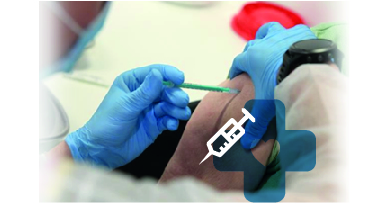
March 2022
COVID-19 response
The COVID-19 pandemic has led to human tragedy, lockdowns and economic slowdown. The EU rapidly took action to protect lives and livelihoods and developed a common European response to the public health and economic challenges.
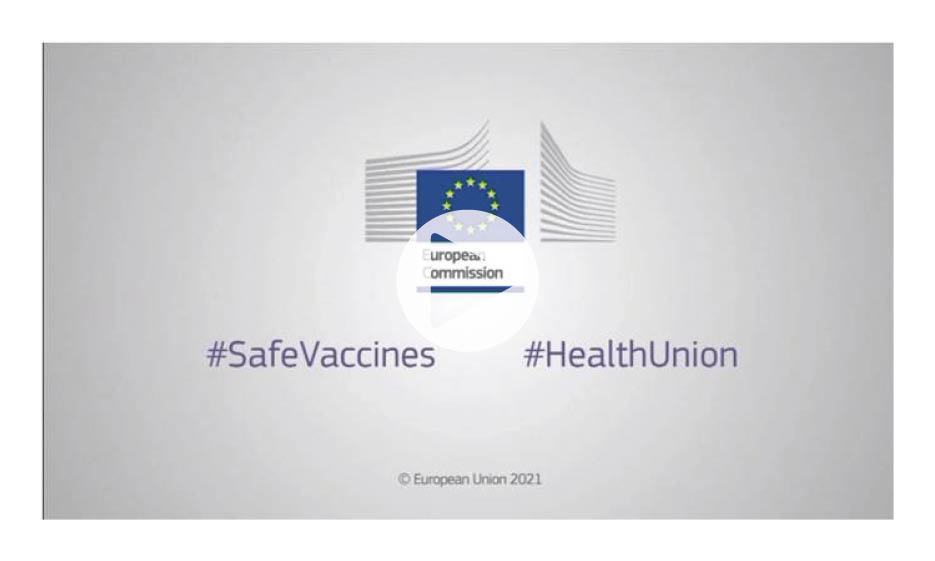
What the EU does
Solidarity is at the heart of the common EU response to COVID-19. The EU is mobilising all resources available to help Member States coordinate their national responses. This includes providing objective information about the spread of the virus, effective efforts to contain it and action to repair the economic and social damage resulting from the pandemic.
The rescEU medical reserve, the first common EU stockpile of emergency medical equipment, has helped Member States facing shortages of equipment. The EU vaccine strategy aims to speed up the development, manufacturing and distribution of COVID-19 vaccines. The EU financed some of the upfront costs faced by vaccine producers to speed up the development and production of promising vaccines as part of its vaccine purchasing strategy. To date, five safe and effective vaccines have been authorised for use in the EU following positive scientific recommendations by the European Medicines Agency.
The Commission had secured up to 2.6 billion vaccine doses by April 2021 and negotiations continue for additional doses. In January 2021, the Commission called on Member States to speed up the roll-out of vaccination across the EU. Vaccine deliveries to EU Member States are increasing steadily and vaccination is gathering pace. The Commission is also working with the industry to increase vaccine manufacturing capacity.
Work has started to rapidly produce effective vaccines for new variants. In February 2021, the Commission launched the HERA Incubator to prepare for COVID-19 variants of concern and ensure the swift development and production of effective vaccines to counter them.
The EU budget for 2021–2027 and NextGenerationEU, the recovery plan, will provide €1.8 trillion to support people, companies and regions, particularly those most affected by the crisis. In addition, the SURE initiative (Support to mitigate Unemployment Risks in an Emergency) helps preserve jobs and support families in 19 Member States.
In March 2021, the Commission presented a proposal to create an EU Digital COVID Certificate to facilitate the safe free movement of citizens within the EU during the pandemic.
The EU is committed to ensuring that safe vaccines reach all corners of the world. The Commission and EU Member States have pledged over €2.2 billion to COVAX, the global initiative aimed at ensuring fair access to COVID-19 vaccines, and are supporting vaccination campaigns in partner countries.

March 2022
Health
Health is a major priority for the European Union. The EU’s health policy complements Members States’ policies to ensure that everyone living in the EU is protected from serious cross-border health threats and has access to quality healthcare.
While the organisation of healthcare is the responsibility of individual Member States, the EU complements national policies to reach shared objectives. The EU’s health policy focuses on tackling serious EU-wide health threats, preventing diseases and ensuring an equal chance of good health and quality healthcare for all. Working together also means pooling resources, which generates economies of scale.

What the EU does
The EU’s ambition is to ensure accessible, effective and resilient health systems in the EU. The EU’s work includes action on vaccination (including against COVID-19), fighting antimicrobial resistance, and preventing and limiting pandemics and other infectious diseases.
The EU’s role in preparing for and responding to serious cross-border health threats is essential to protecting people in Europe. European Commission President Ursula von der Leyen announced a stronger European Health Union to tackle health crises, cancer and medicine shortages together.
Cancer is a major cause of death in the EU and a high cost to health systems. The EU is supporting prevention, detection, early diagnosis and treatment as well as quality of life for cancer patients and survivors through Europe’s Beating Cancer Plan. The EU is active in combating smoking through tobacco legislation and promoting healthy lifestyles.
The pharmaceutical strategy aims to improve access to affordable medicines for patients, including those suffering from rare diseases. It will also support innovation and diverse supply chains, with a view to enhancing our crisis preparation.
The main instrument for financing EU health policies is the €5.1 billion EU4Health programme. It will fund interventions to boost disease prevention and the preparedness and resilience of healthcare systems in the EU. In addition, the Horizon Europe programme will invest €5.4 billion in health-related research and innovation.
The European Centre for Disease Prevention and Control assesses emerging threats so the EU and national health authorities can respond rapidly. And to ensure patients get the best treatment, all medicines in the EU must be approved at the national or the EU level (through the European Medicines Agency) before going on the market.
The European Health Insurance Card helps travellers obtain treatment if they fall ill while visiting another EU Member State, while EU law on cross-border healthcare sets out citizens’ rights when crossing borders for planned care. Through European reference networks, patients with rare or complex diseases benefit from the best expertise from across Europe without even leaving their home country.
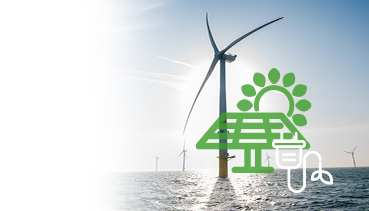
March 2022
European Green Deal
The European Green Deal is the EU’s action plan to make Europe the first climate-neutral continent. It is a growth strategy that aims to create, by 2050, a modern, resource-efficient and competitive European economy with no net emissions of greenhouse gases that leaves no one behind.
Climate change and environmental degradation are threatening Europe and the world. The atmosphere is warming and the climate is changing.
Environmental protection and economic growth can go hand in hand. Between 1990 and 2019, the EU cut its greenhouse gas emissions by 24 % while its economy grew by around 60 %.

What the EU does
The European Green Deal sets out how to make Europe the first climate-neutral continent by 2050. Reaching this target means creating a clean, circular economy, restoring biodiversity and cutting pollution. It requires action in all sectors of the economy, including:
- investing in environmentally friendly technologies;
- supporting innovation in industry;
- cleaner, cheaper and healthier forms of private and public transport;
- decarbonising the energy sector;
- ensuring buildings are more efficient;
- working with international partners to improve global environmental standards.
The EU is committed to becoming climate neutral by 2050 and has set the target of cutting net greenhouse gas emissions by at least 55 % below 1990 levels by 2030. The first-ever European climate law will set these goals in stone and ensure that all EU policies contribute to meeting them.
Significant investment from both the EU and the national public sector, together with the private sector, will be required. The European Green Deal investment plan will mobilise at least €1 trillion in sustainable investments, while the Just Transition Mechanism will ensure that no region is left behind, providing targeted support to help mobilise at least €55 billion in the most affected regions. Climate action is a part of all the main EU spending programmes, with at least 30 % of the budget for 2021–2027 dedicated to climate-related initiatives.
The Green Deal is underpinned by an ambitious goal to halt and reverse biodiversity loss by transforming our food systems and our forest, land, water and sea use, as well as energy, cities and industry. The new EU industrial strategy will help Europe’s industry lead the twin transitions towards climate neutrality and digital leadership. Digital technologies will play an important part in achieving the EU’s 2050 climate goal, for example, by optimising energy use in many sectors including agriculture, transport and manufacturing.
Climate change and biodiversity loss are global threats and the EU will continue to lead international efforts to promote the implementation of ambitious environment, climate and energy policies across the world.

March 2022
Climate action
The EU is working hard to become the first climate-neutral continent by 2050. The European Green Deal is the plan to make this happen by cutting greenhouse gas emissions, investing in green technologies and protecting our natural environment, while also addressing the unavoidable consequences of climate change.
The EU is taking action in response to changes in the earth’s climate, in particular the rise in global temperatures due to an increase in greenhouse gas emissions caused by human activity. Higher average temperatures have many consequences, including more frequent extreme weather events such as floods, droughts and storms. As well as posing a direct threat to people, these can also jeopardise food production and create water shortages, which can in turn trigger famine, conflicts and migration.

What the EU does
The EU is leading global efforts to fight climate change. It is actively working with other countries and regions to achieve the goals of the Paris Agreement, which aims to keep global warming to well below 2 °C above pre-industrial levels, and it is making efforts to limit the increase to 1.5 °C.
The EU is committed to becoming climate neutral by 2050 and has set the target of cutting net greenhouse gas emissions by at least 55 % below 1990 levels by 2030. The first European climate law will set these goals in stone, while the ambitious package of measures that make up the European Green Deal will enable European citizens and businesses to benefit from a sustainable green transition that leaves no one behind.
This transition requires action by all parts of the economy and society. Individuals and communities can play their part through the European Climate Pact, which invites everyone to participate in building a greener Europe.
The EU’s strategy to adapt to climate change promotes measures such as building flood defences, developing drought-tolerant crops and changing building regulations, and supports international action for climate resilience.
Failure to address climate change would be very costly for the EU and the rest of the world. At the same time, the growing demand for clean technologies presents opportunities for innovation, industrial modernisation and green jobs and growth. The European Green Deal represents the growth strategy through which these opportunities will be harnessed. Climate action is a part of all the main EU spending programmes, with at least 30 % of the budget for 2021-2027 dedicated to climate-related initiatives.
The EU has a comprehensive set of measures in place to reduce emissions from all sectors of the economy. The EU emissions trading system cuts emissions from industry, power plants and aviation within Europe in a cost-effective way. EU Member States have also agreed national targets for reducing emissions in other sectors, such as transport, construction and agriculture.

March 2022
Environment
The EU has some of the world’s highest environmental standards, which protect nature and people’s quality of life, green the economy and ensure careful use of natural resources.
However, we are currently facing major global challenges, which include climate change, biodiversity loss and resource scarcity. Meeting these challenges is urgent and will need a deep and fast transformation of our society, the way we live and the way we produce and consume. The EU’s recovery from the COVID-19 pandemic must be green, it must make Europe more resilient and it must be fair and inclusive for all.
EU environment policy plays a crucial role in supporting the European Green Deal in accelerating the transition to a climate-neutral, resource-efficient and regenerative economy that gives back to the planet more than it takes.

What the EU does
The EU is striving to reduce the environmental impacts of the production and consumption of goods and services. Becoming a circular economy, in which the value of products and materials lasts for as long as possible and waste and resource use is minimised, is essential to achieving the EU’s target of reaching climate neutrality by 2050 and halting biodiversity loss.
The new Circular Economy Action Plan, one of the main blocks of the Green Deal, aims to make sustainable products the norm in the EU. It focuses on areas with the most potential such as electronics, batteries and vehicles, textiles, construction and food. Under the plan, the plastics strategy aims to make all plastic packaging in the EU reusable or recyclable by 2030, while new rules target single-use plastics.
The EU must safeguard natural resources and halt the decline of endangered species and habitats. The EU’s biodiversity strategy will expand protected areas on land and at sea, plant billions of trees and encourage sustainable farming practices, among other initiatives. It will build on its existing Natura 2000 network of protected natural areas across the EU where sustainable human activities can coexist with rare and vulnerable species and habitats.
To protect people from environment-related pressures and risks to health, the EU aims to guarantee safe drinking water and clean bathing water, improve air quality, reduce noise and reduce or eliminate the effects of harmful chemicals.
The EU also plays a leading role in international efforts to promote sustainable development. Environmental challenges do not stop at borders. More action is needed globally to ensure clean air, oceans and other water resources and to ensure that land and ecosystems are used sustainably and that climate change is kept to manageable levels. Environmental standards are upheld through the EU’s trade deals with other countries.
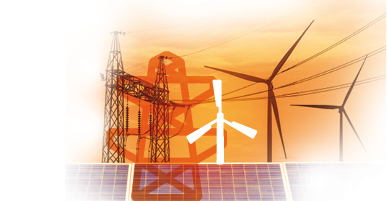
March 2022
Energy
The EU’s energy policy aims to ensure a secure, competitive and affordable supply of energy, while meeting our climate targets.
Europe faces a number of major energy challenges. In addition to ensuring secure energy supplies at reasonable prices for everyone, the EU must shift from a fossil-based economy towards a cleaner, carbon-neutral system.
To make this transition, the EU needs to become more energy efficient, scale up renewable energy, embrace innovation and new technologies, improve cross-border energy connections and reduce dependence on energy imports.

What the EU does
Each Member State defines its own energy mix, but the coordination of rules at the EU level allows them to meet common political objectives.
Climate and energy are inextricably linked. Energy accounts for 75 % of greenhouse gas emissions in the EU. To achieve its goal of becoming climate neutral by 2050, the EU is seeking to completely redefine its energy system.
The Energy Union will deliver this transformation by coordinating with other policy areas such as transport, research and innovation, digitalisation, the circular economy and sustainable financing.
The clean energy for all Europeans legislative package will help to speed up the clean energy transition and deliver on the EU’s Paris Agreement commitments.
The decarbonisation of the power sector through renewable energy is one of the key elements of the European Green Deal. Offshore renewable energy is among the technologies with the greatest potential. In addition, the EU is taking steps to improve energy efficiency, including by renovating millions of Europe’s buildings and through ecodesign and energy labels.
The proposed EU strategies for energy system integration and hydrogen pave the way towards a fully decarbonised, more efficient, flexible and interconnected energy sector. In addition, the Commission is looking at new challenges such as decarbonising the gas sector, for example, by reducing methane emissions.
Tackling these challenges at the EU level also provides new opportunities for growth, jobs, research, and a more competitive and sustainable energy market. Consumers should also benefit significantly in terms of their rights to change energy suppliers, and, ultimately, lower household bills and less air pollution. Some additional policies and measures that help ensure that the EU meets its goals include:
- new cross-border networks for gas and electricity, including projects to better integrate renewables into the grid;
- measures to step up efforts on batteries, including the creation of the European Battery Alliance to build up battery technology and production capacity in the EU;
- the initiative for coal regions in transition towards clean energy sources, leaving no one behind;
- contributing to the ITER international fusion project, one of the world’s most ambitious energy projects.

March 2022
Transport and travel
The EU’s transport policy helps keep the economy moving by developing modern infrastructure that makes journeys quicker and safer, all while promoting sustainable and digital solutions.
Europe needs efficient transport connections to drive business, growth and employment, for tourism and leisure, and to keep people connected. Transport is a major contributor to the economy, directly employing around 10 million people. The EU’s transport policy focuses on creating a crisis-proof single European area with cleaner and greener transport and fair competition.
The Re-open EU platform provides practical information on COVID-19 and national coronavirus safety and travel measures, such as quarantine and testing requirements in the Member States.

What the EU does
Thanks to the EU, the last 20 years have seen considerable progress in Europe’s transport sector, with safer skies, seas and roads, better working conditions for transport workers, more and cheaper mobility options and fast progress towards cleaner and digital solutions.
Transport accounts for a quarter of the EU’s greenhouse gas emissions and the European Green Deal aims to reduce them by 90 % by 2050. Achieving more sustainable and smart mobility means providing more affordable, more accessible, healthier and cleaner alternatives. A key objective is to boost the uptake of clean vehicles and alternative fuels and strengthen the role of sustainable transport modes, such as rail. In 2021, the European Year of Rail shone a light on the benefits of rail as a sustainable, smart and safe means of transport.
Improving efficiency is crucial. Digital technologies enabling automated mobility and smart traffic management systems, for example, will help with efficiency while also making transport cleaner.
Funded through the Connecting Europe Facility, with a budget of over €25.8 billion, the EU’s transport infrastructure policy aims to connect the whole continent. This includes bridging gaps between national transport networks and supporting investments in cross-border connections. It also prioritises environmentally friendly modes such as rail and the development of infrastructure for vehicles using alternative fuels.
Transport is the backbone of the single market, keeping the EU’s economy moving. By building a single European market in aviation and advancing on the Single European Sky initiative, flying continues to become easier and cheaper. Licensed rail companies can now offer their services anywhere in the EU and shipping companies can operate in more countries.
Safety and security are paramount. While there is progress in the right direction, around 18 800 people still lost their lives in road accidents in 2020. This is why the EU actively works to improve road safety. EU transport policy also helps travellers in other ways: air, rail, ship and bus passengers travelling in the EU have rights when they experience delays or cancellations.

March 2022
Food and farming
The common agricultural policy ensures a stable food supply produced in a sustainable way and at affordable prices for the EU’s 447 million consumers. It also helps tackle climate change, manage our natural resources and support jobs and growth in rural areas.
The common agricultural policy (CAP) is applied in all EU countries and is funded from the EU budget. It supports the EU’s vital food and farming sector, which provides nearly 40 million jobs.
Crises such as climate change and the COVID-19 pandemic are a reminder that our food system is under threat and must become more resilient. A healthier and more sustainable EU food system is a cornerstone of the European Green Deal.

What the EU does
The CAP provides support through the following.
- Direct payments that support farm incomes. These offset the risks and uncertainties associated with farming and are allocated on the condition that strict food safety, environmental and animal health and welfare rules are followed.
- Market measures to deal with difficult situations, such as a sudden drop in demand due to a health scare or a fall in prices due to temporary oversupply.
- Rural development programmes (co-financed by EU countries) that foster innovation and competitiveness to make rural areas attractive places in which to live and work.
In 2019, the EU supported farmers to the tune of €57.98 billion, with income support comprising nearly three quarters of the total amount.
Proposals for the future CAP seek to shift the emphasis from rules and compliance to performance and results. They aim to foster a sustainable and competitive agriculture sector that can contribute to the goals of the European Green Deal. Farmers, agri-food businesses, foresters and rural communities have an essential role to play on many issues. One such issue is the Farm to Fork strategy that aims to protect the environment through sustainable food production and consumption. The strategy aims to promote healthy food for everyone and prevent food loss and waste, while ensuring farmers’ livelihoods. The future CAP is closely linked to the EU biodiversity strategy for 2030 and is due to be implemented from 1 January 2023, pending final agreement between the European Parliament and the Council of the European Union.
The EU’s General Food Law aims to protect people’s health and consumer interests, while ensuring the single market works efficiently. The European Food Safety Authority advises on food-related issues to protect people, animals, plants and the environment. The Rapid Alert System for Food and Feed helps ensure that food that does not comply with European rules is removed from the shelves. Whenever significant outbreaks of animal disease or food poisoning occur, EU authorities can follow the movement of food products via the TRACES system.

March 2022
Oceans and fisheries
Our oceans produce most of the oxygen we breathe, regulate our weather and climate and are home to the majority of the planet’s species. They are also important drivers of the European economy, providing us with food, jobs, transport and recreation. The EU works to protect our seas and oceans and to ensure that they remain environmentally and economically sustainable for future generations.
What the EU does
With a turnover of €650 billion in 2018, and employing close to 4.5 million people, the EU’s ‘blue’ economy sector is in good health. The EU’s Sustainable Blue Economy strategy seeks to harness the potential for sustainable growth in the marine and maritime sectors as a whole.

Thanks to research and innovation, the seas and oceans are a source of renewable energy, minerals and pharmaceuticals. The EU is in a unique position to develop offshore renewable energy thanks to the number and variety of its sea basins and the steadily falling costs of new installations. Proposals to maximise this potential will help the EU to meet its goal of becoming climate neutral by 2050.
While nurturing these new opportunities, the EU also plays an important role in promoting the responsible and sustainable exploitation of seas, both in Europe and globally.
The EU’s common fisheries policy aims to ensure that fishing and aquaculture (farming fish under controlled conditions) are environmentally, economically and socially sustainable. Its goals are to foster a dynamic and sustainable fishing industry, conserve resources and protect the marine environment, while ensuring a fair standard of living for fishing communities. It contains a set of rules for managing European fishing fleets and for conserving fish stocks. To prevent overfishing, quotas for EU Member States set limits on how much of each species can be caught, while a landing obligation avoids the wasteful practice of dumping unwanted fish.
The EU has introduced protected areas to safeguard marine ecosystems and their biodiversity, along with the services they provide, and aims to protect at least 30 % of the EU’s seas by 2030. In addition, EU rules to tackle marine litter reduce the negative impacts of the 10 single-use plastic products most often found on Europe’s beaches and seas, along with lost and abandoned fishing gear.
The EU’s common fisheries policy and maritime policy will be financed through the European Maritime, Fisheries and Aquaculture Fund. Pending its final approval, this fund will provide over €6.1 billion (2021–2027) for sustainable development in the sector, with a particular focus on supporting small-scale coastal fisheries.

March 2022
Economy, finance and the euro
The Economic and Monetary Union provides a common foundation for stability, jobs and growth across the EU.
The Economic and Monetary Union binds the EU’s economies together through coordinated economic and fiscal policies, harmonised rules for financial institutions, a common monetary policy and a common currency, the euro. It is a powerful tool to deliver jobs, growth, social fairness and financial stability. However, while there have been important institutional reforms to strengthen the Economic and Monetary Union in recent years, it remains a work in progress.

What the EU does
The EU’s economic and financial policies aim to:
- create jobs and boost investment;
- promote economic stability;
- improve the efficient functioning of the Economic and Monetary Union;
- regulate financial institutions and complex financial products;
- preserve financial stability and protect taxpayers in financial crises;
- strengthen the international role of the euro.
While all 27 Member States are a part of the Economic and Monetary Union, many have taken their integration further and adopted the euro as their currency. Together, these countries make up the euro area. Today, the euro is used by more than 340 million people in 19 Member States. Euro notes and coins are a tangible symbol of the freedom, convenience and opportunities that the EU makes possible.
In the aftermath of the 2008 financial crisis, the EU took action to address some of the institutional weaknesses the crisis exposed in the Economic and Monetary Union and create a safer financial sector. The EU has strengthened economic governance, designed a system to safeguard financial stability in the euro area, improved Member States’ public finances and promoted reforms to encourage investment. Moreover, the EU put in place harmonised rules to increase the resilience of EU financial institutions and strengthen supervision of banks in the euro area.
The strong foundations provided by the Economic and Monetary Union have helped Member States weather the unprecedented economic and social impact of the COVID-19 pandemic. The pandemic highlighted the necessity of responding to crises quickly, decisively and in a coordinated manner. The EU responded by allowing Member States to depart from their normal budgetary requirements, creating the €100 billion SURE initiative to help protect jobs and workers and launching the unprecedented €723.8 billion (current prices) Recovery and Resilience Facility, the centrepiece of NextGenerationEU. The facility is financing the investments and reforms contained in the recovery and resilience plans prepared by Member States. These measures will support the green and digital transitions while helping EU countries to emerge stronger from the pandemic.

March 2022
Employment and social affairs
The EU contributes to the creation of more and better jobs across Europe and aims for fair social standards for all, including through the €99.3 billion European Social Fund Plus for the 2021–2027 period.
Responsibility for employment policies and social affairs is shared between the EU and its Member States. The Commission has made jobs, growth and investment a top priority, backed up by NextGenerationEU, the EU’s recovery plan to tackle the social and economic fallout of the COVID-19 pandemic.
What the EU does
The EU’s employment and social affairs policies are designed to:
- create quality jobs throughout the EU;
- help workers to find employment in their own or another Member State;
- promote skills and entrepreneurship;
- coordinate and modernise social security schemes;
- create better working conditions through common minimum standards;
- support social inclusion and combat poverty and homelessness;
- protect the rights of people with disabilities.
The EU provides and coordinates funding to help Member States to invest in areas like childcare, healthcare, training, accessible infrastructure and help with finding a job. The European Social Fund Plus will help millions of people to acquire new skills, in particular those required for the green and digital transitions, and find better jobs. The Youth Guarantee helps ensure that all people under 30 receive a good quality and concrete offer of a job, apprenticeship, traineeship or continued education within 4 months of leaving formal education or becoming unemployed. Meanwhile, the new aim, learn, master, achieve (ALMA) initiative aims to help disadvantaged young people who are vulnerable as regards their chances of accessing work or training for individual or structural reasons.
The European Skills Agenda is designed to help individuals and businesses develop more and better skills, and sets ambitious objectives to be achieved by 2025.
The European Pillar of Social Rights enshrines principles and rights in the areas of equal opportunities on the labour market, fair working conditions and social protection. An action plan to turn the principles into reality sets key targets for employment, training, and social protection and inclusion to be reached by 2030.
EU rules on social security coordination do not replace national systems but protect the social security rights of people when they move within the EU (and Iceland, Liechtenstein, Norway and Switzerland). The European Labour Authority ensures that EU rules on labour mobility are enforced in a fair, simple and effective way. EURES, the European job mobility portal, helps connect jobseekers and companies offering a job, while the Europass service helps people build their CVs.
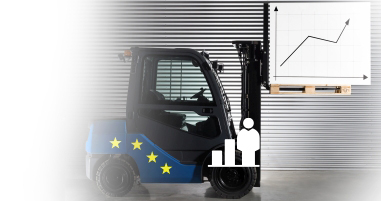
March 2022
Jobs, growth and investment
The EU is committed to creating a more attractive investment environment that will drive economic growth and create jobs. It aims to do this by removing barriers to investment and ensuring that EU citizens are equipped with the skills needed for the jobs of the future.
The EU is addressing the consequences of the COVID-19 pandemic, while working to help EU citizens successfully navigate the green and digital transitions. It aims to ensure that the transformation of the EU’s economy is fair and inclusive so that every citizen can reap the benefits offered by the twin transitions and to make sure no one is left behind.
What the EU does
The InvestEU programme is an important element of the EU’s recovery plan to tackle the consequences of the COVID-19 pandemic and achieve the EU’s long-term priorities. It builds on the success of the investment plan for Europe, which mobilised more than €500 billion between 2015 and 2020 to help close the gap in investment caused by the 2007–2008 financial crisis. To help investment recover even further, InvestEU provides an EU budget guarantee to help businesses in the EU access and attract the funding they need. It aims to trigger at least €372 billion in additional investment between 2021 and 2027. The programme focuses on four key policy areas:
- sustainable infrastructure,
- research, innovation and digitisation,
- small and medium-sized businesses, and
- social investment and skills.
To complement the programme, the InvestEU advisory hub will act as a one-stop shop for the identification, preparation and development of investment projects across the EU.
The rapid shift towards a climate neutral and digital Europe is changing the way we work. The European Skills Agenda is already helping to address this challenge and sets objectives to be achieved by 2025. It puts into practice key principles of the European Pillar of Social Rights, which aims to create a fair and inclusive European labour market. To ensure concrete benefits for citizens, key targets for employment, training, and social protection and inclusion have been set for 2030.
The Just Transition Mechanism, the Recovery and Resilience Facility and, in the future, the proposed Social Climate Fund will provide support to reduce regional and social disparities. The Commission is also working to identify concrete measures and solutions for Europe’s demographic challenges, so as to support people, regions and communities that are most affected.

March 2022
Regions
Regional policy targets all regions and cities in the EU in order to support job creation, business competitiveness, economic growth and sustainable development, and to improve citizens’ quality of life.
Modernising the airports of Riga and Wrocław; improving urban mobility in Athens, Sofia and Cluj-Napoca; preserving Mont Saint-Michel and safeguarding Pompeii; developing broadband infrastructure across Lithuania; supporting businesses in Utrecht and Paredes; renewing wastewater treatment in Trenčín and Slavonski Brod; and promoting the use of information technologies in universities in Nicosia and Ljubljana – these are just some examples of the thousands of projects co-funded by the EU’s regional policy.
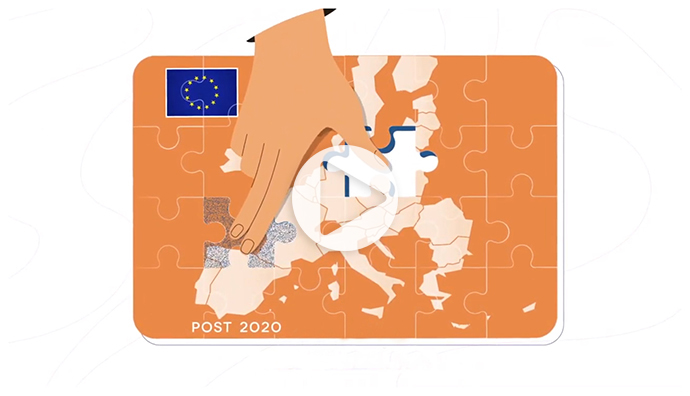
What the EU does
Regional policy underpins European solidarity, boosting economic growth and improving quality of life through strategic investment. It dedicates the bulk of its funding to help the EU’s less-developed countries and regions to catch up and to therefore reduce the economic, social and territorial disparities that still exist in the EU.
Regional policy is jointly managed by the Commission and the EU Member States and their regions, which choose the projects that will be co-financed by the EU under programmes agreed on in advance with the Commission. EU funds are always topped up with national (private and/or public) funds.
Through the European territorial cooperation (Interreg) programmes, regional policy pays particular attention to the needs and potential of border regions.
Almost a third (€392 billion) of the EU’s 2021–2027 budget has been set aside for regional policy. These resources are used to finance strategic transport and communication infrastructures; to favour a transition to a more environmentally friendly economy; to help small and medium-sized enterprises to become more innovative and more competitive; to create new and lasting job opportunities; to reinforce and modernise education systems; and to build a more inclusive society.
In addition, under NextGenerationEU, the Recovery Assistance for Cohesion and the Territories of Europe (REACT-EU) will provide more than €50 billion of fresh resources to existing programmes in the Member States until 2023 to support the recovery from the COVID-19 pandemic.
To achieve the EU’s goal of becoming the first climate-neutral continent, the Just Transition Mechanism will help mobilise around €55 billion between 2021 and 2027 to support regions most affected by the shift to a climate-neutral economy. The proposed Social Climate Fund also aims to help Member States support the transition to climate neutrality for people most reliant on fossil fuels.

March 2022
Research and innovation
The €95.5 billion research and innovation programme Horizon Europe is helping to boost jobs and growth and tackle some of our biggest challenges.
Research and innovation are essential to our economy and society. They are at the heart of European efforts to create jobs and boost growth and investment, and help make people’s lives better through improvements in areas such as healthcare, transport and energy. They also provide us with the knowledge and solutions to tackle both urgent problems such the COVID-19 pandemic and longer-term challenges such as climate change and the fight against cancer.
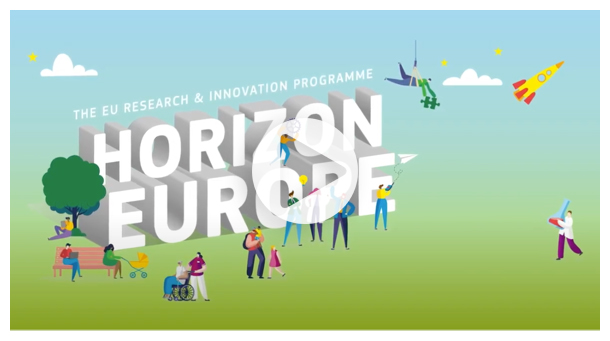
What the EU does
The EU is the world’s biggest knowledge factory, accounting for almost a third of global science and technology production. However, in the face of increasing competition, the EU must keep turning excellent research and innovative ideas into successful technologies and products. All EU Member States have their own research policies and funding programmes, but many important issues can be best tackled by helping researchers and innovators in different countries to work together. This is why research and innovation is supported at the EU level, in particular through the Horizon Europe programme.
Horizon Europe is one of the largest and most ambitious research programmes in the world, investing €95.5 billion of funding (2021–2027), in addition to the other public and private investment that this money attracts. Building on the achievements of the Horizon 2020 programme, it continues to drive Europe’s scientific excellence through the European Research Council and the Marie Skłodowska-Curie fellowships and exchanges. It also draws on the scientific advice, technical support and dedicated research of the Commission’s science and knowledge service, the Joint Research Centre.
Horizon Europe has established a series of EU missions – a new way of working together to tackle big challenges in health, climate and the environment. Each of the five missions work as a set of actions to achieve concrete results by 2030.
Horizon Europe also supports European partnerships, which bring the EU, national authorities and the private sector together to address some of Europe’s most pressing challenges through concerted research and innovation initiatives. They will help strengthen the new European research area, which aims to create a single EU market for research, innovation and technology and enables countries to be more effective by aligning their research policies and programmes.
Mandatory open access to publications and open science principles are applied throughout the Horizon Europe programme.
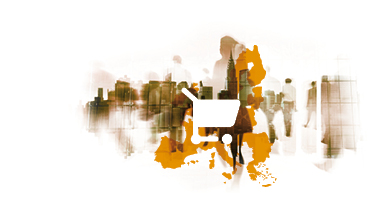
March 2022
Single market
The single market is one of the EU’s greatest achievements. For 30 years it has helped to make everyday life easier for citizens and businesses, allowing goods, services, people and money to move freely around the EU.
Thanks to the single market (sometimes also called the internal market) EU citizens can study, live, shop, work and retire in any EU Member State and enjoy products from all over Europe. Companies are able to expand their operations, while competition helps to bring prices down and give consumers more choice. At the same time, the EU works to ensure that these greater freedoms do not undermine fairness, consumer protection, workers’ rights or environmental sustainability.

What the EU does
Underpinned by the EU’s industrial strategy, the single market plays an essential role in supporting businesses on the path to the green and digital transitions. It also helps shield companies from supply shocks and crises while strengthening their global competitiveness.
The EU is working to:
- build on the lessons learned from the COVID-19 pandemic and Russia’s invasion of Ukraine, for example, by addressing supply chain disruptions;
- ensure the single market creates more opportunities for companies and entrepreneurs to expand their businesses;
- tackle obstacles that prevent people from easily buying or selling goods and services from or in another Member State and workers from moving freely;
- make sure the same rules on fairness, opportunities and obligations also apply to the digital economy;
- improve reskilling and upskilling across industrial sectors;
- ensure access to finance, standards and patents to build, scale and protect European leadership in innovative technologies.
New industrial alliances in key areas where the EU is dependent on non-EU countries play a key role in achieving its goals. As part of these efforts, the EU has presented new measures to improve the shift to a circular economy and to secure a more sustainable supply of critical raw materials.
Small and medium-sized enterprises, which make up 99 % of all companies in the EU, provide two-thirds of total private-sector employment. EU policies encourage the creation of new businesses and support innovative enterprises in their efforts to scale up.
With a budget of €4.2 billion for 2021 to 2027, the Single Market Programme consolidates a wide range of activities in areas such as food safety, consumer protection, standardisation and competitiveness, reducing overlaps and improving coordination.
The Your Europe portal contains information on living, working, travelling, studying and doing business in another Member State. It also offers access to services such as Your Europe Advice and the SOLVIT problem-solving network.

March 2022
Consumer protection
EU consumer policy safeguards consumers’ rights, ensures products are safe, helps people make informed choices when they buy goods and services and offers tools to solve problems if something goes wrong.
The EU single market offers consumers access to greater choice, flexibility, quality and value for money. EU consumer policy ensures that people’s rights will be upheld if they encounter any problems when buying goods or services from other Member States, building trust and encouraging trade, including online.

What the EU does
The New Consumer Agenda sets out the EU’s strategy up until 2025. It outlines the measures that the EU will take to respond to new challenges such as COVID-19 and the green and digital transitions. These include addressing environmental and sustainability concerns, enforcing consumer rights and protecting vulnerable consumers.
The EU offers consumers a set of practical rights when something goes wrong.
- Online shoppers have 14 days to reconsider their purchase and withdraw. They may return a product within 2 weeks and get their money back.
- If an item bought in the EU (online or in a shop) is not as advertised or does not work properly, the consumer has the right to at least a free repair or replacement.
- EU rules on mortgage credits ensure clear information in advertisements and timely information to consumers before signing a contract.
- There are minimum standards for passenger rights across all modes of transport, including information, assistance and compensation in the event of cancellations or long delays.
The EU also provides help to resolve disputes with traders quickly and efficiently. The online dispute resolution platform allows consumers and traders to resolve disputes over online purchases. The European Consumer Centres Network provides free help and advice to consumers on their cross-border purchases. New EU rules will, by mid 2023 at the latest, make it easier for organisations to defend the collective interests of consumers and bring actions to court.
Stringent safety, health and environmental standards apply to toys, electrical appliances, cosmetics and pharmaceuticals. Strict rules ensure that unsafe products are recalled from the market, with hundreds of products notified via the EU’s rapid alert system for dangerous non-food products every year. In 2021, the Commission proposed to revise rules on product safety, including new rules for online marketplaces, along with a revision of EU rules on consumer credit.
The EU’s Circular Economy Action Plan aligns consumer and environmental rights, focusing on higher quality, longer lasting, sustainable products.

March 2022
Fair competition
EU competition rules aim to ensure that all companies compete fairly and equally in the single market to the benefit of consumers, businesses and the European economy as a whole.
Together with national competition authorities and national courts, the Commission enforces EU competition rules to make sure that companies compete fairly with each other. This helps to reduce prices and improve quality, encourages innovation and efficiency and creates a wider choice for consumers.
What the EU does
The Commission takes action in regard to:
- cartels or other illegal arrangements between companies to avoid competing with each other or that set artificially high prices;
- cases where major players abuse their dominant position in markets to try to squeeze out competitors or charge excessive prices;
- company mergers and takeovers that could restrict competition in the single market;
- financial support (State aid) from EU governments to companies, which may distort competition in the single market by favouring some companies over others; and
- promoting competition culture internationally so that EU companies enjoy fair competition in markets elsewhere in the world.
The enforcement of competition policy benefits EU citizens. For example, in 2020, conservative estimates by the Commission put customer savings from cartel prohibitions and merger interventions at between €14 billion and €23.3 billion.
EU investigations into anti-competitive practices cover goods, professions and services. The Commission monitors the assistance EU governments give to businesses to ensure that it does not give certain companies an unfair advantage over their competitors. State aid may be allowed if it helps or promotes disadvantaged regions, small and medium-sized businesses, research and development, environmental protection, training, employment or culture.
New rules on State aid introduced in January 2022 align with the EU’s important objectives under the European Green Deal. They aim to help EU Member States meet their ambitious EU energy and climate targets, supporting projects for environmental protection, including climate protection and green energy generation.
The EU is also working to ensure its legislation keeps pace with the digital transformation. The Digital Markets Act, for example, will prevent online platforms that act as gatekeepers from imposing unfair conditions on businesses and consumers through a clear list of dos and don’ts. Meanwhile the Digital Services Act will impose binding EU-wide obligations on intermediaries providing digital services that connect consumers to goods, services or content, making it easier for smaller platforms to scale up across the EU single market.

March 2022
Tax and customs
While national governments independently set and collect taxes, the EU is responsible for a customs union that ensures the free movement and safety of goods in the single market.
EU Member State governments are broadly free to design their tax laws according to their national priorities. However, in doing so, they must respect certain fundamental principles and ensure that national tax rules do not hinder the EU’s single market.
The EU customs union makes it easier for companies to trade, harmonises customs duties on goods from outside the EU and helps protect EU citizens and the environment.
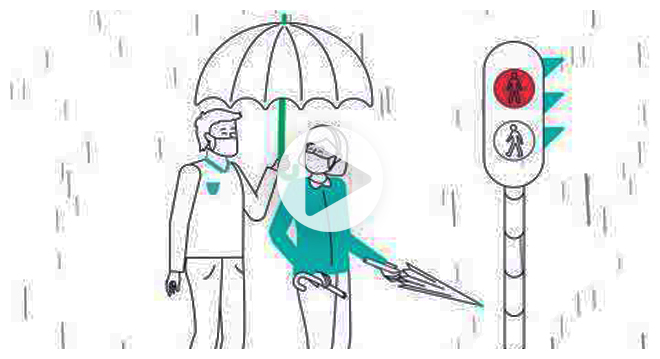
What the EU does
The EU does not have a direct role in raising or setting tax rates, rather it oversees national tax rules to ensure they promote jobs and growth and to ensure that one country’s taxes do not discriminate against consumers, workers or businesses from other Member States.
The governments of all Member States must agree when it comes to making EU decisions so that everyone’s interests are taken into account. For some taxes – such as value added tax or excise duties on petrol, tobacco and alcohol – Member States have agreed common rules to simplify online and offline cross-border commerce and ensure a level playing field between EU and non-EU companies and platforms.
In 2021, the Commission set out its vision for a new, fairer and more transparent EU business tax system for the 21st century. It includes actions to cut red tape, support small businesses and fight tax abuse. With its proposal for a minimum corporation tax rate of at least 15 % for all multinational companies, the Commission aims to make the EU among the first to implement the 2021 historic global tax reform agreement. This should ultimately ensure that all companies are taxed fairly, wherever they do business.
To ensure a level playing field across the single market, the EU must function as a single customs union, with the same tariffs, standards and procedures to handle goods imported from abroad. No customs duties are applied to goods that are transported from one Member State to another.
In practice, the EU’s customs union is managed by the national customs services. They protect consumers, animals and the environment from goods that could be harmful, and they contribute to the fight against organised crime, terrorism and smuggling. Once goods have cleared customs, they can circulate freely or be sold anywhere within Europe.

March 2022
Space
The EU’s space policy actively contributes to fighting climate change, stimulates technological advances and innovation, and improves the lives of EU citizens.
Space technology, data and services are essential to the daily lives of Europeans (e.g. for using mobile phones, car navigation systems and automated teller machines (ATMs)). Satellites also provide valuable data and services for a wide array of applications, from transport, agriculture and the environment to crisis response.

What the EU does
The EU has a competitive and growing space industry – estimated to be worth up to €62 billion – that employs more than 230 000 people and is responsible for one third of all satellites currently in orbit.
The following flagship components deliver European space-based services on a daily basis.
- Copernicus is the EU’s Earth-observation system. The data generated by its satellites is used in many areas, from monitoring climate change and its effects to directing emergency and humanitarian services. Copernicus data has been used to locate vessels in distress and to respond to forest fires, earthquakes and floods, helping save lives and property.
- Galileo, the EU’s global satellite navigation system, provides accurate and reliable positioning and timing information for all modes of transport, vehicles, railways, aviation and other sectors. Thanks to Galileo, 3.2 billion smartphones are equipped with a safe and independent positioning system.
- The European Geostationary Navigation Overlay Service (EGNOS) monitors and corrects satellite navigation signals for aviation, maritime and land-based users over most of Europe. 426 airports in the EU are already using EGNOS to make landings in adverse weather conditions safer, avoiding delays and rerouting.
The 2021–2027 EU space programme, with a budget of €14.9 billion, builds on their success with a focus on more coordination with other EU policy areas. It aims to encourage scientific and technical progress and support the competitiveness and innovation capacity of the European space industry, in particular small and medium-sized enterprises, start-ups and innovative businesses. The Commission has also proposed two new flagship initiatives to boost satellite-based secure connectivity and space traffic management.
Through individual EU Member States and the European Space Agency, the EU has developed world-class technology in space exploration. Achievements include the development of new rockets and satellites and robot explorers on the Moon and Mars. While space exploration is strategically and politically important, the EU is also helping scientists to unlock the secrets of the universe; in 2019 EU-funded researchers unveiled the first-ever photograph of a black hole.

March 2022
International affairs and security
The common foreign and security policy enables the EU to speak and act as one in world affairs, allowing Member States to tackle challenges they cannot solve alone and ensuring the security and prosperity of EU citizens.
The policy is implemented by the High Representative of the Union for Foreign Affairs and Security Policy, and supported by the European External Action Service, the EU’s diplomatic service. The EU’s external actions are guided by the principles that inspired its own creation and development, and which it seeks to promote in the wider world, including peace, democracy, the rule of law, human rights and fundamental freedoms.
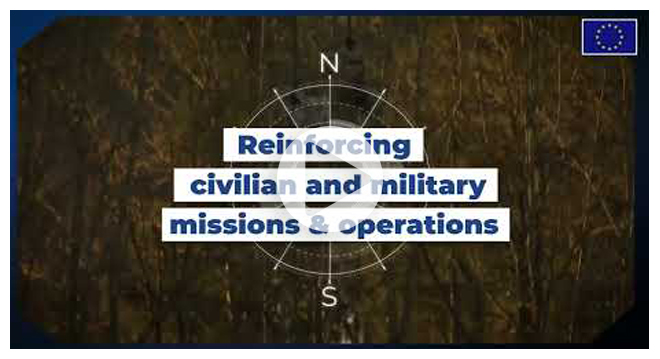
What the EU does
At a time of increasing and complex security threats, the EU Strategic Compass on security and defence will strengthen the EU’s ability to react to crises and threats over the coming decade. The Strategic Compass focuses on:
- acting more quickly and decisively when a crisis happens;
- securing citizens against fast-changing threats;
- investing in the capabilities and technologies the EU needs;
- partnering with others to achieve common goals.
The EU supports countries facing conflicts and crises. With the European Peace Facility, the EU is taking on more responsibility as a global security provider. The facility funds the common costs of military missions and operations under the common security and defence policy and peace support operations in cooperation with partners such as the African Union. It also strengthens the defence capacities of partner countries and regional and international organisations and has been instrumental in supporting Ukraine in its response to Russia’s military aggression.
Since Russia’s invasion of Ukraine in February 2022, the EU has also taken steps to ensure that global food security is restored through international cooperation.
The EU and its Member States have remained the largest donors in the international response to the Syria crisis, supporting people in Syria and the region through investment totalling more than €27 billion since 2011.
The Global Gateway is the EU’s new investment strategy to boost smart, clean and secure energy, transport and digital infrastructure, and strengthen health, education and research systems across the world. The EU, its Member States and its financial institutions, acting together as Team Europe, aim to mobilise up to €300 billion in public and private investment between 2021 and 2027. The Global Gateway is the EU’s contribution to the G7’s Global Partnership for Infrastructure and Investment.
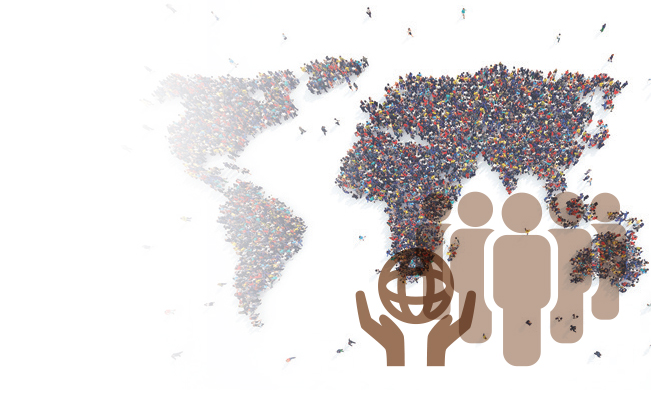
March 2022
International partnerships
Partnerships and development cooperation lie at the heart of the EU’s foreign policy. The EU and its Member States are the world’s largest provider of development aid.
Development assistance is one of the pillars of the EU’s action around the world, alongside foreign, security and trade policies. The EU promotes poverty eradication, human development, sustainable growth and good governance. It does this by creating partnerships to address global challenges such as climate change, natural resources depletion and irregular migration. The EU upholds effective multilateralism and works with all stakeholders, since current challenges call for more multilateral governance and rules-based international cooperation.
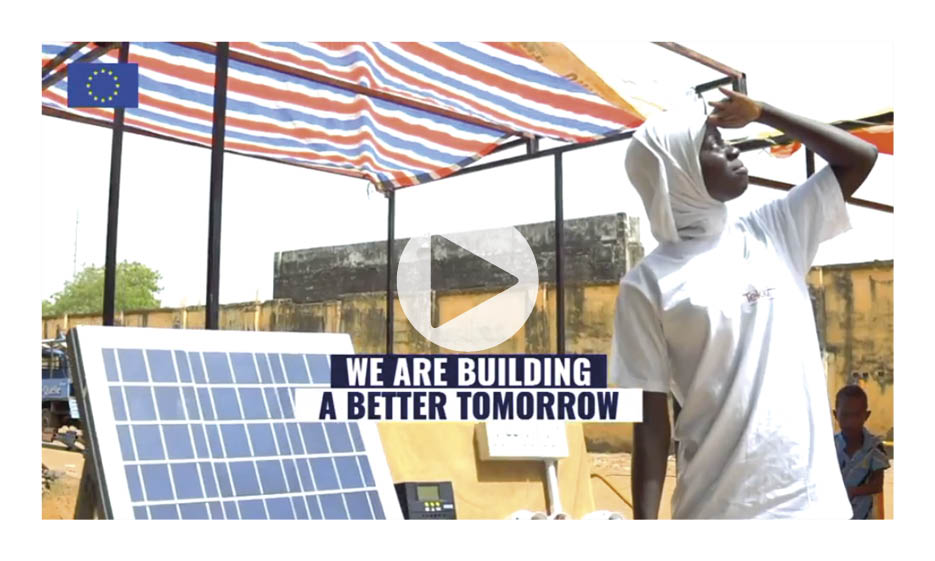
What the EU does
The EU sees international partnerships as an investment in a viable, sustainable and shared future. The EU is a leading advocate of the UN’s 2030 agenda for sustainable development and the Paris Agreement on climate change. The European consensus on development sets out how the EU focuses on people, the planet, prosperity, peace and partnership in working towards the sustainable development goals. The EU structures its external action around:
- green deal alliances;
- alliances for science, technology, innovation and the digital transition;
- alliances for sustainable growth and jobs, including through investment in education and skills;
- migration partnerships;
- governance, peace and security, and human development, with a particular focus on women and youth.
The Africa–EU partnership remains a key priority for the EU.
In 2020, the EU responded quickly to the COVID-19 crisis. The Team Europe approach, which combines resources, expertise and tools from the EU, its Member States and financial institutions, has helped the EU’s partners mitigate the impact of the pandemic. The EU is also leading the charge to make safe and effective vaccines accessible to all. The Team Europe approach is now being applied in the EU’s budget for external action: the Neighbourhood, Development and International Cooperation Instrument – Global Europe.
The EU dedicates around 10 % of its budget to external action. The EU’s delegations work hand in hand with governments, international organisations, EU Member States and the private sector to increase the impact of Europe’s support. Collectively, the EU and its Member States provided €66.8 billion of aid in 2020.
The values of respect for human rights, democracy and the rule of law guide the EU’s action around the world. The EU Action Plan on Human Rights and Democracy focuses on protecting and empowering individuals, building resilient, inclusive and democratic societies and promoting human rights worldwide. Thanks to the Gender Action Plan, gender equality and women’s empowerment are at the forefront of the EU’s work.
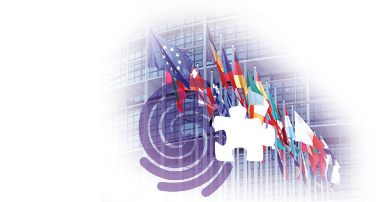
March 2022
EU neighbourhood and enlargement
The EU encourages stable democracies and economies in neighbouring countries by building tailor-made partnerships based on shared interests and cooperation at bilateral or regional level.
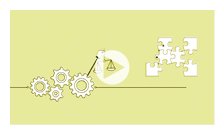
What the EU does
European Neighbourhood policy governs the EU’s relations with 16 of its closest neighbours. To the south: Algeria, Egypt, Israel, Jordan, Lebanon, Libya, Morocco, Palestine*, Syria and Tunisia. To the east: Armenia, Azerbaijan, Belarus, Georgia, Moldova and Ukraine.
This cooperation aims mainly to:
- stabilise neighbouring countries by addressing economic development, employment and opportunities for young people, transport and energy connectivity, security and migration;
- promote the values of good governance, democracy, the rule of law and human rights;
- facilitate cooperation at regional level, for example through the Eastern Partnership and the Union for the Mediterranean.
In addition, in the Southern Neighbourhood the EU works alongside its partners to resolve crises such as in Syria or Libya, and to regulate migration flows.
EU Enlargement policy covers Albania, Bosnia and Herzegovina, Kosovo**, Montenegro, North Macedonia, Serbia and Türkiye. The prospect of EU membership is a powerful stimulus for democratic and economic reforms in European countries that want to join the EU. It helps to foster reconciliation and stability. A European country can only become an EU Member State if it meets democratic standards (including the rule of law, human rights and respect for and protection of minorities), has a functioning market economy and the capacity to cope with competition and market forces in the EU, and can take on the responsibilities of EU membership.
Türkiye is the EU’s partner in many essential areas, however, in recent years it has been moving further away from the EU’s core values and principles. Therefore, Türkiye’s accession negotiations are effectively frozen. The EU has a strategic interest in a stable and secure environment in the eastern Mediterranean and in the development of a cooperative and mutually beneficial relationship with Türkiye.
In 2020, the EU provided aid worth €7.47 billion to neighbourhood and enlargement regions to help mitigate the impact of the COVID-19 pandemic. The EU has provided emergency response, supported research, health and water systems and addressed the economic and social consequences of the pandemic.
- This designation shall not be construed as recognition of a State of Palestine and is without prejudice to the individual positions of the Member States on this issue.
- This designation is without prejudice to positions on status, and is in line with UNSCR 1244/1999 and the ICJ Opinion on the Kosovo declaration of independence.

March 2022
Trade
The EU champions free trade. 35 million EU jobs are, directly or indirectly, supported by trade with countries outside the EU. The EU fights for open, rules-based markets, a level playing field and the highest international standards across the world.
The EU is the world’s largest trading power and one of the most open economies. A third of the EU’s gross domestic product depends on trade. 85 % of future global growth is forecast to come from outside Europe. The EU negotiates and agrees international trade agreements on behalf of its Member States.

What the EU does
The EU’s trade policy covers trade in goods and services, but also in matters such as the commercial aspects of intellectual property and foreign direct investment.
In February 2021, the Commission presented a new EU trade strategy, which sets out three main objectives:
- supporting the recovery and transformation of the EU economy in a way that supports our green and digital ambitions;
- shaping global rules to ensure that they are fair and sustainable;
- increasing the EU’s ability to pursue its interests and enforce its rights.
At the heart of the strategy is a commitment to reforming the World Trade Organization so that it is better able to respond to the challenges of modern trade.
Trade policy can play an important role in combating climate change and environmental degradation. Therefore the EU will improve the implementation and enforcement of sustainable development chapters in its trade agreements. Specifically, the EU will propose to make respect for the Paris Agreement on climate change an essential element in future trade and investment agreements.
The EU stands for open and fair trade and fights against protectionism. It strikes a balance between being open and ensuring that people and companies are defended against unfair trade practices. With the newly appointed Chief Trade Enforcement Officer, the EU is putting a specific focus on maximising the benefits of trade agreements for companies, in particular small and medium-sized enterprises and farmers, and on ensuring that its trade partners honour their commitments, including on sustainable development.
The EU has 46 trade agreements in force with 78 partners around the world. In 2020, the EU reached a new agreement on trade with Mexico, and its trade deal with Vietnam entered into force. In its first year, the agreement with Japan had already boosted EU exports, with almost 7 % growth in the first 10 months of the agreement.
Following the United Kingdom’s departure from the EU on 31 January 2020, the EU and the United Kingdom signed the EU–UK Trade and Cooperation Agreement on 30 December 2020.

March 2022
Humanitarian aid and civil protection
The EU, together with its Member States, is among the world’s leading donors of humanitarian aid. It provides critical relief to millions across the globe, and coordinates emergency assistance in Europe and worldwide.
The EU responds to crisis situations and ensures rapid and effective delivery of relief assistance through two main channels: humanitarian aid and civil protection. The EU aims to:
- save and preserve life, prevent and alleviate suffering and safeguard the integrity and dignity of populations affected by natural disasters and human-made crises;
- provide rapid response to emergencies both inside and outside the EU;
- reduce disaster risks, for example, through action to mitigate the consequences of climate change;
- improve disaster preparedness, for instance, with early warning systems;
- ensure a smooth transition when an emergency operation comes to an end, by linking up with development aid strategies;
- strengthen the overall resilience of populations, for example, by investing in measures to help them prepare for future disasters; and
- protect and ensure the future of children caught up in disasters.
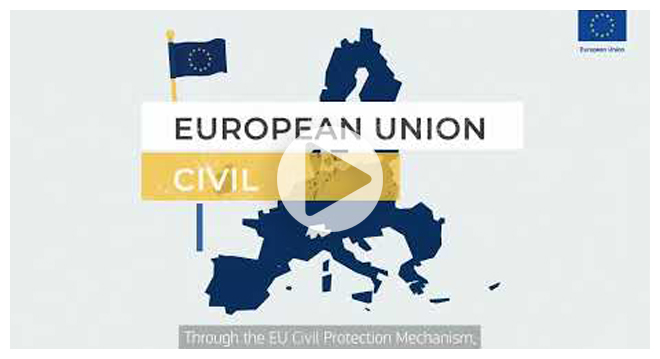
What the EU does
Working with a diverse range of partners, the EU has been supporting humanitarian operations in 110 countries for over 30 years. The EU provided more than €2.4 billion in humanitarian aid in 2021. It is a leading humanitarian donor in many crises, for example, by providing:
- emergency assistance to support people fleeing the Russian invasion of Ukraine;
- humanitarian assistance to refugees and internally displaced people in Bangladesh, Ethiopia, Somalia and Yemen;
- emergency relief to displaced people inside Syria and refugees in neighbouring countries;
- life-saving humanitarian projects and assistance in the worst affected communities in the Central African Republic and South Sudan;
- emergency assistance through the humanitarian air bridge in fragile and conflict-affected countries such as Afghanistan.
The EU also sends emergency response teams and channels aid to affected regions within the EU and across the globe through its Civil Protection Mechanism, for example, by:
- responding to the COVID-19 pandemic in Europe and worldwide, including delivering COVID-19-related supplies via rescEU and repatriating EU citizens stranded abroad;
- sending experts and equipment to countries affected by earthquakes (Haiti), volcanic eruptions (Tonga), forest fires (the western Balkans and the Mediterranean) and to contain the outbreak of Ebola in Guinea in 2021;
- channelling millions of emergency items (such as first aid kits, tents and beds) to Ukraine and neighbouring countries in the largest operation since the mechanism was created.

March 2022
Fundamental rights
The EU guarantees a range of fundamental rights. Respect for fundamental rights is a common value for the EU and its Member States, and guides the EU’s action both inside and outside its borders.
The EU is not simply a single market for goods and services. Europeans share values and rights set down in the EU treaties and in the EU Charter of Fundamental Rights.
What the EU does
The EU Charter of Fundamental Rights brings together all the personal, civil, political, economic and social rights enjoyed by people in the EU. These rights are guaranteed in EU countries and wherever EU law is applied and include human dignity, freedom of expression and association, right to non-discrimination, right to asylum and the right to a fair trial.
In addition, the charter enshrines specific rights linked to EU citizenship under the EU treaties, by granting EU citizens:
- the freedom to move, live, work and study in any EU country;
- the right to vote and to stand as a candidate in local and EU elections;
- the right to lodge a petition to the European Parliament;
- the right to submit a complaint to the European Ombudsman;
- the right to consular protection outside the EU.
The protection of fundamental rights is also ensured through specific EU laws such as the General Data Protection Regulation, legislation that aims to prevent discrimination on the grounds of sex, race, ethnicity, religion, disability, age or sexual orientation, and laws protecting whistle-blowers and victims of crime.
The EU also ensures the protection of fundamental rights through dedicated policy measures and close cooperation with EU countries and civil society, for instance, on hate crime and hate speech, gender equality and non-discrimination, civil and criminal justice, the digitalisation of justice, data protection, upholding the rule of law, rights of the child and consumer rights.
The EU’s legislative and policy work in the area of fundamental rights is supported by the Citizens Equality Rights and Values programme.
The EU is working to achieve a Union of equality through a set of strategies, which aim to challenge stereotypes and create conditions that ensure that everyone can participate fully and freely in European society.
The EU also promotes and defends universal values worldwide. In 2021, the EU launched the Global Human Rights and Democracy programme, worth €1.5 billion, from 2021 to 2027. The EU has also put in place a global human rights sanctions regime, which allows it to better target those responsible for serious violations globally.
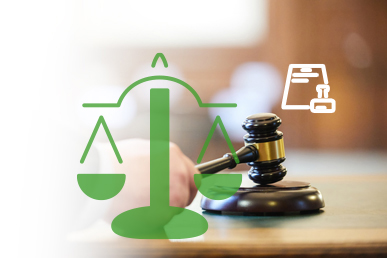
March 2022
Justice and the rule of law
The EU works to ensure the uniform application of EU law, to solve cross-border legal problems for its citizens, and to promote and uphold the rule of law.
The EU strives to create an area of justice where citizens and businesses can resolve legal issues in other EU Member States in the same way as they can at home. A borderless and seamless common justice area will ensure that citizens can rely on a set of rights and can access justice throughout the EU.
What the EU does
EU citizens can live, study, work and do business anywhere in the EU. This could mean having to deal with the judicial authorities of another Member State.
The EU seeks to strengthen mutual trust between the courts and administrations of the Member States so they recognise each other’s judicial decisions. This is especially important in civil cases such as divorce, child custody or maintenance claims.
The European Union Agency for Criminal Justice Cooperation (Eurojust) facilitates cooperation between national justice authorities to help fight serious crimes such as corruption, terrorism, and drug trafficking and distribution. The European Arrest Warrant, for example, has replaced lengthy extradition procedures to return suspected or convicted criminals back to the country where they will be or have been tried. Meanwhile, the EU strategy on victims’ rights aims to ensure that all victims of crime in the EU have the support and protection they need.
The Court of Justice of the European Union ensures that EU law is applied in the same way in all Member States. The EU is working towards the modernisation of EU justice systems to keep pace with the digital transformation and ensure easier and faster access to justice. Progress can be tracked through the EU justice scoreboard, which provides data on the efficiency, quality and independence of the justice systems in all Member States, while the e-Justice portal offers a one-stop shop for all justice matters.
The rule of law – one of the fundamental values of the EU – means independent and efficient justice systems must offer adequate judicial protection to everyone in the EU. It is necessary to protect all other values and is essential to the functioning of the EU. It guarantees the application of EU law, the efficiency of the internal market and fosters mutual trust, enabling a business-friendly environment.
The EU works with Member States to uphold and strengthen the rule of law through the Rule of Law Mechanism and by providing technical support and funding for justice reforms.

March 2022
Gender equality
Equality between women and men is a fundamental value of the EU, dating back to the 1957 Treaty of Rome. The EU continues to work to tackle gender-based discrimination and to make gender equality a reality.
Although women in Europe should enjoy equality, empowerment and safety, they are still over-represented in the lower-paid sectors, under-represented in decision-making positions in politics and business and earn on average 13 % less than men across the EU. Gender-based violence and harassment also remain widespread.

What the EU does
The EU’s work on gender equality is driven by the 2020–2025 gender equality strategy. Its goal is to end gender-based violence, challenge gender stereotypes, close gender gaps in the labour market and promote gender balance in decision-making and in politics. The strategy builds on decades of EU initiatives on gender equality.
To enforce the principle of equal pay for equal work enshrined in the Treaty of Rome, the Commission has proposed pay transparency measures, including gender pay gap reporting obligations for big companies. Employees will also have the right to compensation for discrimination in pay.
Violence against women is one of the most persistent forms of gender-based discrimination in Europe. The Commission has proposed new EU-wide rules to combat violence against women and domestic violence, which aim at punishing offenders and ensuring better protection of women, including online. All Member States and the EU have signed the Council of Europe Convention on Preventing and Combating Violence against Women and Domestic Violence (the Istanbul Convention).
The EU is also working to help women break the glass ceiling in business and politics and to boost women’s participation in the digital sector. In particular, the Commission is seeking to improve gender balance in company boards in the EU’s largest listed companies.
But life is not just about work and money. The work–life balance directive, which entered into force in July 2019 and had to be transposed by Member States by August 2022, introduces new rights to help balance the sharing of care responsibilities between women and men. This covers paternity, parental and carers’ leave, along with flexible working arrangements for parents and carers.
The EU aims to improve the lives of girls and women worldwide through its Gender Action Plan III. This promotes gender equality issues in its external action, including in areas such as development cooperation and trade negotiations. The EU also led the way in negotiating the inclusion of gender equality targets in the UN’s 2030 Agenda for Sustainable Development.

March 2022
Racism and equality
The EU aims to ensure that everyone can enjoy their fundamental rights, freedoms and equal participation in society, irrespective of their origin.
Although discrimination on the grounds of racial or ethnic origin is prohibited in the EU, racism and racial discrimination persist. The EU is working to combat racism and intolerance on all fronts.
What the EU does
The EU is stepping up its efforts to tackle racism and discrimination through the 2020–2025 EU anti-racism action plan, and the appointment of the first ever coordinator for anti-racism.
The EU rejects and condemns all forms of racism and intolerance. The anti-racism action plan sets out a series of measures to:
- tackle racism and racial discrimination through and beyond legislation and ensure that EU legislation prohibiting hate speech and hate crime, including online, is applied on the ground;
- step up action against structural racism;
- help amplify the voices of people with a minority racial or ethnic background and bring together actors at all levels in a common endeavour to build a life free from racism and discrimination for all;
- provide funding for building inclusive societies and promoting tolerance and pluralism;
- promote diversity among Commission staff and ensure a discrimination-free and inclusive workplace for all, irrespective of people’s racial or ethnic origin or skin colour.
Unequal treatment on the grounds of racial or ethnic origin, including relating to employment, is prohibited under the Racial Equality Directive, the Employment Equality Directive and the EU Charter of Fundamental Rights.
Policies are in place to combat specific forms of racism. For example, the EU strategy on combating antisemitism aims to prevent all forms of antisemitism, foster Jewish life and promote remembrance and education about the Holocaust. Another strategic framework is in place to advance Roma equality.
The Victims' Rights Directive protects victims of hate crime. The EU strategy on victims’ rights (2020–2025) aims to ensure that all victims of crime receive support and protection no matter where in the EU the crime takes place.
The EU is also devoted to preventing and countering the spread of online hatred while always protecting freedom of expression. The 2016 code of conduct on countering illegal hate speech online has enabled users to flag online hate speech and allows platforms to swiftly review and remove illegal or harmful content.

March 2022
LGBTIQ equality
The EU guarantees a range of fundamental rights for its citizens and protects them from discrimination. This includes members of the LGBTIQ community.
Around 76 % of Europeans polled in 2019 agreed that gay, lesbian or bisexual people should have the same rights as heterosexual people. However, lesbian, gay, bisexual, trans, non-binary, intersex and queer people (LGBTIQ) can face discrimination in many areas of life, along with hate speech and violence.
What the EU does
In 2020, the Commission adopted its first LGBTIQ equality strategy, addressing discrimination, safety, inclusivity and equality.
The strategy builds on over 20 years of action at the EU level. Since 1999, the EU has had the power to act in cases of discrimination based on sexual orientation. EU actions include the following.
- The Employment Equality Framework Directive, which obliges all EU countries to provide legal protection against discrimination and harassment on the basis of sexual orientation in respect of job applications, promotion, training, working conditions and pay and dismissal.
- The Gender Recast Directive that protects trans people against discrimination in their professional life arising from gender reassignment and the Directive on Sex Equality in Social Security to protect people against discrimination in social security.
- The Victims’ Rights Directive, which created a set of binding rights for victims of hate speech or violence and obliges EU countries to ensure they are put into practice.
Across the world, same-gender relationships are still criminalised in several countries, with little protection for LGBTIQ people. The EU encourages other countries to ensure that sexual orientation, gender identity or sexual characteristics cannot be grounds for violence or criminal penalties.
The EU is also a major donor worldwide to projects aimed at combating discrimination, mainly through the European Instrument for Democracy and Human Rights. Since 2016, the EU has supported projects in Asia, Africa, Latin America and eastern Europe. In 2018, the EU launched a fund to support activists and organisations in areas where LGBTIQ people are at greater risk of discrimination.
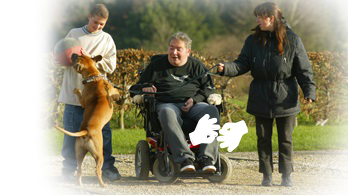
March 2022
Disability
The EU promotes the active inclusion and full participation in society and the economy of people with disabilities on an equal basis with others, and protects them from discrimination and violence.
Around 87 million people in the EU have some form of disability. They have the same rights and fundamental freedoms as everyone else, including the right to equality and non-discrimination and to be free from exploitation, violence and abuse. The EU is working to create a barrier-free Europe that empowers and enables people with disabilities to fully enjoy their rights.
What the EU does
The EU and its Member States are parties to the United Nations Convention on the Rights of Persons with Disabilities. Moreover, the EU Charter of Fundamental Rights and the EU treaties further commit the EU to promote policies that address the rights and needs of people with disabilities.
The 2021–2030 strategy for the rights of persons with disabilities, anchored in the UN convention and building on its predecessor and the European Pillar of Social Rights, sets out concrete initiatives to ensure that people with disabilities can:
- enjoy the same right to free movement as everyone else – the EU parking card and the EU disability card, already piloted in eight Member States, facilitate the mutual recognition of disability status and entitlements between EU countries;
- better participate in the labour market through specific measures to improve their employment opportunities;
- live independently, wherever and with whomever they choose – the AccessibleEU resource centre will contribute to improving access to transport, buildings, information, audiovisual media, communications and technologies;
- participate in society and the economy and be protected from discrimination and violence – the strategy also aims to ensure equal opportunities in and access to justice, education, culture, sport and tourism.
In recent years, a number of EU initiatives and legislation have contributed to improving the lives of people with disabilities in Europe. The European Accessibility Act sets out binding requirements for the accessibility of certain key products and services. Specific rules are also in place to ensure protection against discrimination and equal treatment in employment and occupation.
The EU is also committed to raising awareness of the challenges people with disabilities encounter every day and the tools they need to improve their lives. The European Day of Persons with Disabilities, celebrated at the beginning of December each year, helps bring disability issues to the attention of the broader public. Each year, the Access City Award rewards a city that has made outstanding efforts to become more accessible.

March 2022
Over 50s
The EU is working to help people live healthy, active and independent lives for as long as possible. It complements Member States’ actions in areas such as employment, health and education, and coordinates joint action on epidemics.
Demographic trends show that in the coming decades, the share of older people in the EU will increase significantly. The Commission’s green paper on ageing has launched a debate on the challenges and opportunities of Europe’s ageing society. EU countries are addressing the impacts of ageing by improving education and skills systems, encouraging longer and fuller working lives and advancing reforms of social protection, including pensions and long-term care.
What the EU does
The EU has made it illegal for employers to discriminate on the grounds of age. The European Network of Equality Bodies helps ensure that EU rules on equality and non-discrimination are applied in a uniform way across the EU.
EU initiatives such as the European Skills Agenda, the Pact for Skills and the Digital Education Action Plan help prepare people for the changing world of work. Projects funded by the European Social Fund Plus help millions of Europeans learn new skills and find better jobs each year.
Whether it’s for career advancement or for personal development, it’s never too late to learn. A wide range of opportunities for the over 50s – from work-based learning courses and training to EU-funded projects – are available through Erasmus+.
EURES, the European job mobility network, helps those looking for a job in another Member State, while EU rules facilitate the coordination of national social security systems, protecting the rights of people moving or retiring within Europe.
A new voluntary pension scheme, the pan-European personal pension product (PEPP), now offers people more choice and enables them to keep saving in the same product, even if they move to another EU country. Every 3 years, the Commission publishes a report on the current and future adequacy of old-age incomes in Member States. Through the 2021–2030 strategy for the rights of persons with disabilities, the EU will contribute to tackling gaps in social protection, including pension schemes, for people with disabilities.
The EU is active in many different areas, such as promoting healthy lifestyles, supporting more effective and sustainable healthcare services, disease prevention and stepping up the fight against cancer.
The EU financially supports non-governmental organisations promoting the right to fair treatment and working to address age discrimination, such as AGE Platform Europe.

March 2022
Digital economy and society
The EU is determined to make the 2020s Europe’s digital decade. It is working to ensure that digital technologies work for everyone, while helping to achieve climate neutrality by 2050, and securing Europe’s place as a leader in the digital economy.
Digital technologies have never been more important in our lives. During the COVID-19 crisis, they have kept people connected and businesses working, and have proved essential for education and training. They are also crucial in fighting climate change, including through smart energy and transport systems.

What the EU does
The groundwork for the digital transformation has already been laid. EU action has brought benefits such as:
- an end to additional roaming charges when people use their mobile devices when travelling in the EU;
- access to online content when traveling in the EU;
- strict EU rules on personal data protection;
- free public Wi-Fi hotspots across the EU;
- new rules to ensure better access to public websites for people with disabilities;
- action to fight fake news and online disinformation.
The EU’s proposed digital strategy will continue to work on digital solutions that benefit people, businesses and the planet. It focuses on three main objectives: technology that works for people, a fair and competitive economy and an open, democratic and sustainable society.
The Commission has proposed a comprehensive set of rules for online platforms operating in the EU to protect the fundamental rights of citizens online, to address online harm and to foster innovation. Beyond that, the strategy also covers everything from cybersecurity and data to digital education and democracy. The proposed Digital Compass translates the EU’s goals for 2030 into concrete targets. Safeguarding EU values and people’s fundamental rights and security is a key element.
The Digital Europe programme, with over €7.5 billion in funding between 2021 and 2027, will boost investments in areas such as supercomputing, artificial intelligence and digital skills. It will also ensure wide use of digital technologies across the economy and society, including through digital innovation hubs.
Other programmes will also support the digital transition, including Horizon Europe, which focuses on research and technological development, and the digital aspects of the Connecting Europe Facility. In addition, under the NextGenerationEU recovery fund, Member States should allocate 20 % of their financial support from the Recovery and Resilience Facility to the digital transformation.

March 2022
A safer internet
The EU has the strictest data protection and privacy rules in the world. These help ensure that the online environment is safe and fair for citizens and businesses alike and protect people, in particular children, from illegal and harmful content.
The rapid growth of online services in recent years has brought many benefits for Europeans, but also potential new risks. This is why the EU is continually working to ensure that its legislation keeps pace with the digital transformation and that what is illegal offline is also illegal online.

What the EU does
The protection of personal data and privacy are fundamental rights in the EU. The EU has been applying high standards for data protection and privacy for decades. The law gives people rights as regards data protection and confidentiality of communications, which must be respected by organisations that process their data. In response to the realities of the internet age, the General Data Protection Regulation (GDPR) gives individuals enforceable rights, including the right to be forgotten.
In parallel, the EU is leading efforts to make the digital world a secure place. The cybersecurity strategy aims to strengthen the EU’s collective resilience against cyber threats and help ensure that all citizens and businesses can benefit from trustworthy and reliable services and digital tools.
The Commission is tackling the spread of online disinformation and misinformation to ensure the protection of European values and democratic systems. Initiatives include the Action Plan and Code of Practice on Disinformation to fight fake news and disinformation; the European Democracy Action Plan and the European Digital Media Observatory.
The EU’s Code of Conduct on countering illegal hate speech online aims to ensure that requests to remove racist and xenophobic content are dealt with speedily. Companies, including Facebook, Twitter, Instagram and Snapchat, have committed to reviewing the majority of these requests in less than 24 hours and to removing the content if necessary.
The safety of children online is paramount. The European strategy for a better internet for children has influenced national policies in most Member States and set a global benchmark for the protection and empowerment of children online. The EU-funded network of Safer Internet Centres helps raise awareness of online safety and foster child participation. New rules on audiovisual media services require online video-sharing platforms to take steps to restrict children’s access to harmful content, while the proposed Digital Services Act anticipates specific obligations to address significant risks to the well-being of children. The Commission has also presented an EU strategy for a more effective fight against child sexual abuse.
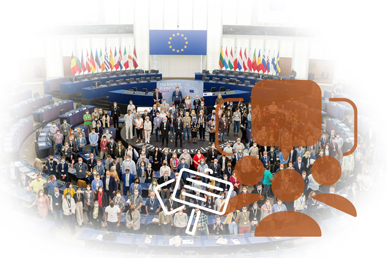
March 2022
Citizens and democracy
The EU encourages transparency and democratic participation in a just and fair European political system, and actively promotes citizen engagement in the EU decision-making process.
The EU is governed by the principle of representative democracy, with citizens directly represented at the EU level in the European Parliament and Member States represented in the European Council and the Council of the European Union. The EU works to safeguard European democracy, promote free and fair elections and uphold the electoral rights of EU citizens.

What the EU does
The 2019 European parliamentary elections saw the highest voter turnout in 20 years (over 50 %), indicating a healthy level of democratic participation of EU citizens and a desire to be heard.
The Conference on the Future of Europe was launched as part of the EU’s commitment to listen to citizens and to give them a greater say on what the EU does and how it works for them. The year-long initiative provided a unique opportunity for Europeans to share their ideas and expectations through a series of citizen-led debates and discussions.
EU citizens can contribute to the European decision-making process in a number of ways. The ‘Have your say’ website gives citizens and businesses the chance to share their views on new EU policies and existing laws. Meanwhile, the European Citizens’ Initiative allows citizens to call on the Commission to propose legislation on areas under EU responsibility, once an initiative has gathered 1 million signatures across at least seven Member States. Citizens’ dialogues give people the chance to ask EU politicians questions, make comments and say how EU policies affect them.
The European Democracy Action Plan aims to empower citizens and strengthen democracy in the EU, with measures to promote free and fair elections, fight disinformation, and strengthen media freedom. As part of its work in this area, the Commission has set out concrete action to improve the safety of journalists and media professionals and to protect them from abusive lawsuits.
The Commission has proposed new rules to ensure greater transparency on paid political advertising, which has grown in importance in campaigning in the EU in recent years. It has also proposed to update the current EU rules concerning the funding of EU political parties and the electoral rights of mobile citizens. The Commission reports every 3 years on progress towards effective EU citizenship and new priorities for the years ahead in the area of EU citizenship rights.

March 2022
The EU budget
The EU budget provides the resources that the EU needs to deliver on its policy agenda. By pooling resources at the EU level, Member States achieve more than by acting alone and can successfully address challenges that know no borders, like climate change or the COVID-19 pandemic.
The EU budget consists of long-term plans that cover 7 years. The European Parliament and EU countries in the Council decide on the budget for each year on the basis of a proposal from the Commission. In 2022, the annual budget was about €170 billion, a large sum in absolute terms but only about 1 % of the wealth generated by EU economies every year. Less than 7 % is spent on EU administration.
The EU budget is financed mainly through revenue from customs duties, contributions based on value added tax (VAT), contributions based on non-recycled plastic packaging waste and a direct contribution by EU countries, known as the gross national income-based contribution. To fight any misuse of EU money, the European Anti-Fraud Office independently investigates corruption, fraud and other illegal activities involving EU funds and develops anti-fraud policy for the Commission.
What the EU does
The EU budget has been at the heart of Europe’s response to the COVID-19 crisis, through a €2 trillion investment package. It consists of the EU’s long-term budget for 2021 to 2027 of €1 211 billion, topped up by €807 billion through NextGenerationEU, a temporary instrument to power the recovery. Funds from this package are being used to support Europe’s economic recovery and steer the transition towards a modern, sustainable and resilient EU. To finance NextGenerationEU, the EU is borrowing on the capital markets. The borrowed amounts will be repaid over a long-term period, until 2058. To help with the repayments, the EU is looking into introducing new sources of revenue for the EU budget.
To give some examples, funds from the EU budget enabled the EU to sign advance purchase agreements with pharmaceutical companies for COVID-19 vaccines. On this basis, the EU secured up to 4.2 billion vaccine doses.
In 2022, in the aftermath of Russia’s invasion of Ukraine, the EU budget was mobilised to provide emergency assistance, support at the border and in EU countries, and to alleviate the humanitarian consequences of the war.
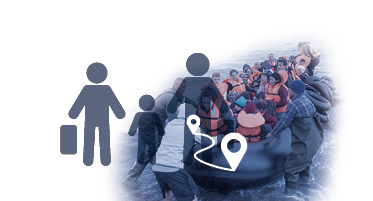
March 2022
Migration and asylum
The EU’s migration and asylum policy helps Europe deal with migration challenges in an effective manner.
The EU works to combat irregular migration and people smuggling, save lives and secure the EU’s external borders while still attracting new talent and skills.
Thanks to measures taken by the EU to control its external borders and manage migration, irregular arrivals have fallen by almost 90 % since 2015.
What the EU does
Building on progress made since 2016, the Commission’s 2020 proposal for a new pact on migration and asylum will put in place an effective system to manage migration and deal with irregular arrivals, including in times of crisis. The new framework will ensure the fair sharing of responsibility and solidarity between Member States while providing certainty for individual applicants.
The pact ensures that those in genuine need will have the right to stay in the EU, while the first EU strategy on voluntary return and reintegration aims to help people with no right to stay in the EU to return voluntarily to and seize opportunities in their home country.
A new policy on legal migration aims to attract people with new skills and talent that will benefit the EU economy, strengthen cooperation with non-EU countries and improve overall migration management in the long term.
Integration and inclusion are key for people coming to Europe, local communities, the long-term well-being of our societies and the stability of our economies. While integration policy is primarily the responsibility of Member States, the EU is stepping up action in this area. The 2021–2027 action plan on integration and inclusion aims for inclusion for all through better access to jobs, healthcare, housing and education.
Stepping up the response to migrant smuggling is a common challenge for the EU, its Member States and partner countries alike. Since 2015, over 650 000 lives have been saved at sea by EU and Member State operations. The renewed EU action plan against migrant smuggling sets out measures to counter and prevent smuggling in cooperation with partner countries.
The EU is an area of protection for people fleeing persecution or serious harm in their country of origin. Following Russia’s invasion of Ukraine in February 2022, the EU acted swiftly to offer immediate support to people fleeing the war, including temporary protection in the EU. The temporary protection scheme gives people rights such as residence permits, access to the labour market and housing, healthcare and access to education for children.
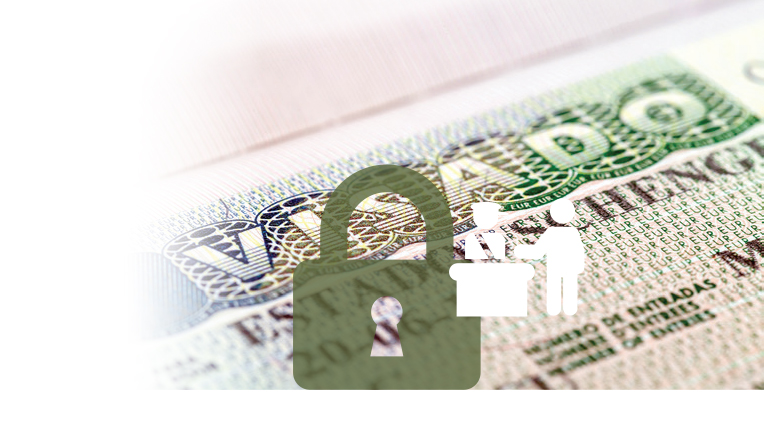
March 2022
The Schengen area
The EU provides a border-free travel area to more than 425 million people in 26 countries, as well as to non-EU citizens living in the EU or visiting as tourists, exchange students or for business purposes.
Thanks to the Schengen Agreement, checks at many EU internal borders have been progressively abolished. Today, almost 1.7 million people live in one Schengen country and work in another, while 3.5 million travel between Schengen countries every day. The Schengen area also contributes to the functioning of the single market, enabling goods and services to circulate freely.

What the EU does
Since 1985, the Schengen area has grown to encompass most EU countries (except Bulgaria, Ireland, Croatia, Cyprus and Romania), plus four non-EU countries (Iceland, Liechtenstein, Norway and Switzerland).
However, the abolition of internal borders cannot come at the expense of security. Since no checks are carried out at their internal borders, Schengen countries have joined forces to improve security through tightened controls at their external borders based on a set of common rules.
Operational cooperation between Member States’ law enforcement authorities is essential to ensuring security inside the EU. One of the main tools is the Schengen information system, used to exchange data on wanted and missing persons and objects in real time.
In 2017, the EU introduced new rules to reinforce checks against relevant databases on all people crossing its external borders, including EU citizens, to make sure that they do not represent a threat to internal security or public order. By the end of 2023, a new system will be in place to pre-screen travellers from outside the EU who don’t require a visa to visit the Schengen area. The European Travel Information and Authorisation System (ETIAS) will also apply to Bulgaria, Croatia, Cyprus and Romania. It will help close existing security information gaps while avoiding delays at the border for travellers.
Building on the lessons learned from the COVID-19 pandemic, proposed new rules aim to ensure that controls at internal borders are only introduced as a last resort. They also introduce common tools to manage the external borders more efficiently in the event of a public health crisis.
The European Border and Coast Guard Agency (Frontex) plays an important role in protecting the EU’s external borders and managing migration. The first deployment of the agency’s new standing corps started on 1 January 2021. It will reach its full capacity of 10 000 officers by 2027.
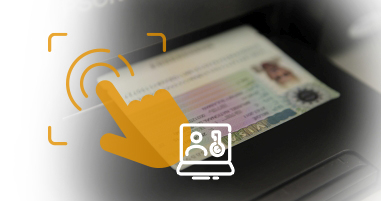
March 2022
Home affairs and citizens’ security
The European Union works to ensure the safety and security of everyone in the EU, in the physical and digital world and across all parts of society.
Europeans should feel confident that wherever they move within the EU, their freedom and security are fully protected. EU Member States, agencies and other partners work together to ensure citizens’ safety, tackle threats and fight crime, while the EU puts policies and tools in place to facilitate and enhance cooperation between them.
What the EU does
The new EU security union strategy for 2020 to 2025 focuses on three priority areas:
- fighting organised crime and human trafficking;
- countering terrorism and radicalisation; and
- fighting cybercrime.
Organised crime comes at a huge cost for victims and for the economy, with between €218 billion and €282 billion estimated to be lost every year. Action to strengthen EU efforts in this area include: a new EU strategy to tackle organised crime, the EU drugs strategy for 2021 to 2025, an EU action plan on firearms trafficking and EU strategies on combating human trafficking and fighting child sexual abuse.
With its new counter-terrorism agenda the Commission aims to step up the fight against terrorism by better anticipating, preventing, protecting and responding to terrorist threats. A package of legislative proposals aims to strengthen the EU’s anti-money laundering and counter-terrorism financing rules. The EU also works to prevent radicalisation. From 7 June 2022, internet companies must remove terrorist content from the web within 1 hour of a removal order from national authorities.
The European Union Agency for Law Enforcement Cooperation (Europol) tackles all areas of crime and terrorism, and works with non-EU partner countries and international organisations. The European Union Agency for Criminal Justice Cooperation (Eurojust) facilitates cooperation between national justice authorities to help fight serious organised crimes, while the European Arrest Warrant has replaced lengthy extradition procedures to return suspected or convicted criminals back to the country where they will be or have been tried.
The EU is fighting all aspects of cybercrime. The new EU cybersecurity strategy aims to ensure that all citizens and businesses can fully benefit from trustworthy and reliable services and digital tools, while the EU Cybersecurity Act strengthens the EU’s defences against large-scale, cross-border cybercrime.
Work to strengthen the EU’s external borders involves the engagement of all relevant parties, including the reinforced European Border and Coast Guard Agency (Frontex) and the customs union. The ability of EU information systems to exchange data and share information will help make checks at external borders more efficient.

March 2022
Education and training
The EU helps improve the quality of education by encouraging and supporting cooperation between Member States and by complementing national measures. Erasmus+ provides opportunities for people of all ages to study, train, gain work experience and participate in exchanges.
Investing in education and training is the key to people’s future. The EU and its Member States are working to improve education outcomes, reduce the number of early leavers from education and training, tackle skills gaps and ensure all Europeans can reap the benefits of the green and digital transitions.
What the EU does
EU countries are responsible for their own education and training systems, but the EU helps them achieve quality education through the exchange of good practice, setting targets and standards, and providing funding and expertise.
The EU is working to create a European education area that will remove barriers to learning and improve access to quality education for all. Covering all levels of education, the initiative focuses on:
- improving quality and equity in education and training;
- supporting teachers, trainers and school leaders;
- promoting the development of digital skills for all citizens;
- encouraging green education initiatives;
- strengthening cooperation with countries around the world.
Building on the lessons learned from the COVID-19 pandemic, the Digital Education Action Plan (2021–2027) aims to boost digital literacy and help Member States work together to adapt their education and training systems to the digital age. Meanwhile, the European Skills Agenda aims to help people develop the skills they need for the changing world of work and sets ambitious objectives for upskilling and reskilling by 2025.
Erasmus+, the EU programme for education, training, youth and sport, supports mobility and learning for all. With a total budget of more than €28 billion, double the funding of the previous programme, Erasmus+ will enable over 10 million people to study, train, gain work experience or volunteer in another country between 2021 and 2027. The DiscoverEU initiative, which is now part of the Erasmus+ programme, gives 18-year-olds the opportunity to explore the EU with a free travel pass. The experience has already given over 130 000 young people the chance to learn more about European culture and history, make new friends and improve their language skills.
The EURES targeted mobility scheme helps over 18s looking for work, training or apprenticeships in another Member State, while the Europass initiative helps workers apply for jobs abroad by presenting their skills and qualifications in a standard Europe-wide format.

March 2022
Youth
Through its youth policies and programmes, the EU aims to give young people more equal opportunities in education and the job market and make sure they can participate fully in all areas of society.
The EU supports and complements the action of Member States through its policies targeting young people, for example, in the areas of education and employment, and promotes cooperation between EU countries.
What the EU does
The EU youth strategy is the framework for EU youth policy cooperation up to 2027. It aims to:
- support the personal development and growth of young people and equip them with life skills;
- encourage young people to become active citizens and agents of positive change inspired by EU values and a European identity;
- improve policy decisions that affect young people across all sectors, notably employment, education, health and social inclusion; and
- contribute to the eradication of youth poverty and all forms of discrimination and promote the social inclusion of young people.
Young people are at the heart of the EU’s policies, from NextGenerationEU and the European Green Deal to the digital decade. 2022 was designated the European Year of Youth, with the aim of celebrating, supporting and engaging with young people, especially those with fewer opportunities.
The EU runs several programmes and initiatives to help young people play a more active role in society and benefit from experiencing life in another country.
Erasmus+ is the EU’s programme to support education, training, youth and sport in Europe. With a total budget of more than €28 billion, it is set to enable over 10 million people to acquire knowledge and skills through experiences abroad such as study, traineeships, apprenticeships, exchanges, teaching, training, youth work and sport between 2021 and 2027.
The youth guarantee scheme supports youth employment by ensuring that all young people under the age of 30 receive a good-quality job, apprenticeship, traineeship or continued education offer within 4 months of becoming unemployed or leaving education. The new aim, learn, master, achieve (ALMA) initiative will support disadvantaged young people by offering them work experience in another Member State.
With a total budget of over €1 billion for the 2021–2027 period, the new European Solidarity Corps programme offers opportunities to some 270 000 young people to help address societal and humanitarian challenges through volunteering at home or abroad.
The European Youth Portal provides information on opportunities such as the DiscoverEU initiative and the EU youth dialogue, which gives policymakers first-hand input on the issues that matter to young people.
European Youth Week takes place every 2 years, alternating with the European Youth Event.

March 2022
Culture, media and sport
The EU works to preserve Europe’s shared cultural heritage and make it accessible to all. It supports the arts and helps cultural and creative industries in the EU to thrive through the Creative Europe programme, and promotes sport through the Erasmus+ programme.
Culture and creativity are at the core of the European project and at the heart of EU cultural policy. Europe’s rich cultural heritage and dynamic cultural and creative sectors bring immense enrichment, pleasure and a sense of identity to millions of people.
Sport and exercise are an integral part of life for millions of Europeans. Besides promoting better health and well-being, sport can help tackle issues such as racism, social exclusion and gender equality.
What the EU does
The EU seeks to protect Europe’s cultural heritage and diversity across countries and harness the contributions made by cultural and creative industries to the economy and society. EU policy also looks to meet common challenges and encourage innovation in the cultural sector. The New European Agenda for Culture contains concrete measures to harness the full potential of culture.
The Creative Europe programme, with a budget of €2.4 billion for 2021 to 2027, aims to strengthen Europe’s cultural and creative sectors, and support their recovery from the COVID-19 pandemic. It also promotes initiatives such as EU prizes for cultural heritage, architecture, literature and music, the European Heritage label and the European Capitals of Culture. Its media strand supports the development, distribution and promotion of audiovisual works including films, series, video games and immersive content. The EU’s audiovisual and media policy aims to strengthen the European audiovisual sector and encourage the availability of content to citizens across the EU.
Digital technologies provide new opportunities to preserve and reuse cultural content, making it accessible to all audiences. The Europeana digital platform enables people to explore a wealth of cultural heritage from more than 4 000 museums, galleries, libraries and archives across Europe.
The EU focuses on sport as a means to keep people healthy, create communities, nurture social inclusion and promote equal opportunities.
Erasmus+ co-funds initiatives to help develop, share and implement innovative ideas and practices to promote grassroots sport. In 2020, the EU supported 315 projects on health, social inclusion and integrity in sport. The #BeInclusive EU Sport Awards recognise organisations using sport to increase social inclusion for disadvantaged groups, while the European Week of Sport encourages Europeans to be active in their everyday lives.
3 How the European Union makes decisions and takes action
1 WHO IS WHO
The European Union is based on the rule of law. This means that every action taken by the EU is founded on treaties that have been approved voluntarily and democratically by all EU countries. The treaties are negotiated and agreed upon by all the EU Member States and then ratified by their parliaments or by a referendum.
The treaties lay down the objectives of the EU and set out the rules on how the EU institutions operate, how decisions are made and the relationship between the EU and its Member States. They are amended each time a new Member State joins the EU. From time to time, they are amended to reform the EU’s institutions and to give the EU new areas of responsibility.
The last amending treaty, the Treaty of Lisbon, came into force on 1 December 2009. Earlier treaties are now incorporated into the current consolidated version, which consists of the Treaty on European Union and the Treaty on the Functioning of the European Union.
More recently, the EU agreed upon the Treaty on Stability, Coordination and Governance in the Economic and Monetary Union; an intergovernmental treaty that obliges participating countries to have firm rules to guarantee balanced public budgets and strengthens the governance of the euro area.
Decision-making at the EU level involves various EU institutions, in particular:
- the European Parliament,
- the European Council,
- the Council of the European Union (Council), and
- the European Commission.
The advisory bodies (the European Economic and Social Committee and the European Committee of the Regions) and national parliaments also play a role.
Generally, the European Council sets the EU’s political agenda, whereas the European Commission proposes new laws that the European Parliament and the Council (also called the Council of the European Union) then decide to adopt. The Member States and the EU institution or institutions concerned then implement them.
The European Parliament
The European Parliament is elected by EU citizens in direct elections held every 5 years. Each Member State elects a number of Members of the European Parliament (MEPs); seats are allocated based on the population of each Member State. The Parliament meets in both Brussels and Strasbourg. The current European Parliament President is Roberta Metsola.
MEPs organise themselves into political groups, and also into committees that examine proposals for new legislation in different policy areas.
In terms of decision-making, the Parliament is responsible for the following.
- Approving, amending or rejecting EU laws, together with the Council, based on Commission proposals. The Parliament also shares equal responsibility with the Council for adopting the EU budget (proposed by the Commission).
- Deciding on international agreements.
- Deciding on enlargements of the EU.
- Electing the President of the Commission, based on a proposal from the Member States, and then approving the full Commission.
- Reviewing the Commission’s work programme and requesting that it proposes legislation.
The Parliament’s work comprises two main stages.
- Committees to prepare legislation: the Parliament has 20 committees and two subcommittees, each handling a particular policy area. The committees examine proposals for legislation, and MEPs and political groups can put forward amendments or propose to reject proposed legislation. These issues are also debated within the political groups before they decide how to vote on a particular subject.
- Plenary sessions approve, amend or reject legislation: this is when all the MEPs gather in the chamber to give a final vote on the proposed legislation and the proposed amendments. These plenary sessions are normally held in Strasbourg, with any additional sessions held in Brussels.
The ninth European Parliament election was held on 23–26 May 2019. In a direct vote, citizens in the 27 EU Member States elected 705 MEPs that make up the current Parliament. More information on the outcome of the 2019 EU elections and how the current Parliament was formed can be found on the European Parliament’s website. The next election will be held in 2024.
The European Council
The European Council, based in Brussels, is made up of the Heads of State or Government of all of the EU Member States, the President of the European Commission and the High Representative of the Union for Foreign Affairs and Security Policy.
The European Council brings together EU leaders to set the EU’s political agenda. It represents the highest level of political cooperation between the EU Member States. The European Council takes the form of (usually quarterly) summit meetings between EU leaders, chaired by the President of the European Council. The president can also convene additional meetings to address urgent issues. In July 2019, the European Council elected Charles Michel as its president for the period from 1 December 2019 to 31 May 2022; he was re-elected for a second term, running from 1 June 2022 to 30 November 2024.
The European Council generally decides issues by unanimity, or by qualified majority in some cases.
The European Council:
- decides on the EU’s overall direction and political priorities, but does not pass laws;
- deals with complex or sensitive issues that cannot be resolved at lower levels of intergovernmental cooperation;
- sets the EU’s common foreign and security policy, taking into account EU strategic interests and defence implications;
- nominates and appoints candidates to certain high-profile EU-level roles, such as the President of the European Commission or the President of the European Central Bank.
On each issue, the European Council can:
- invite the Commission to make a proposal to address it;
- pass it on to the Council of the European Union to deal with.
The Council of the European Union
Together with the Parliament, the Council is the main decision-making body of the EU. It is also known as the Council of the European Union. In the Council, government ministers from each Member State meet to discuss, amend and adopt laws and to coordinate policies. The ministers have the authority to commit their governments to the actions agreed on in these meetings. The presidency of the Council rotates among the EU Member States every 6 months and is responsible for chairing all Council meetings and setting the agendas.
The Council:
- negotiates and adopts EU laws, together with the Parliament, based on proposals from the Commission;
- coordinates EU countries’ policies;
- develops the EU’s foreign and security policy, based on European Council guidelines;
- concludes agreements between the EU and other countries or international organisations;
- adopts the annual EU budget jointly with the Parliament.
The ministers who attend are those that deal with the policy being discussed. For example, environment ministers meet in the Environment Council. The ministers meet several times a year to make decisions relating to the EU, though government officials have meetings all year round to discuss the policy details.
To be agreed, decisions usually require a qualified majority, which is defined as 55 % of the Member States representing at least 65 % of the total EU population. However, certain topics such as foreign policy and taxation require a unanimous vote (all Member States in favour) and a simple majority is required for procedural and administrative issues.
The Council is not to be confused with the Council of Europe, which is not an EU body but an international organisation that was set up to promote democracy and protect human rights and the rule of law in Europe. It comprises 47 European countries, including the Member States of the EU.
The European Commission
The European Commission is the main institution that runs the day-to-day business of the EU. It is the only EU institution that can propose legislation (often after a request from the Parliament or the Council), though it is the Parliament and the Council that vote on it. Most people working in the Commission are based in Brussels or Luxembourg, however, there are representation offices in all the capitals of the EU Member States.
The Commission is composed of the College of 27 Commissioners, one from each EU Member State, and including the president, Ursula von der Leyen, and vice-presidents.
Once the Commission president is nominated, the Council nominates the other 26 members of the Commission in agreement with the nominated president. The members as a single body are then subject to a vote of approval by the Parliament. The commissioners are the Commission’s political leadership for a 5-year term. Each commissioner is assigned responsibility for specific policy areas by the president.
The staff of the Commission are the equivalent of the civil service in a Member State and are organised into departments, known as directorates-general and services, similar to ministries at the national level.
The decisions of the Commission are made based on the collective responsibility of the College of Commissioners. All commissioners are equal in the decision-making process and equally accountable for these decisions. They do not have any individual decision-making powers, except when authorised in certain situations.
There are eight vice-presidents (including three executive vice-presidents and the High Representative of the Union for Foreign Affairs and Security Policy) who occupy these roles in addition to the usual commissioner’s portfolio. The vice-presidents act on behalf of the president and coordinate work in their area of responsibility, together with several commissioners. The political guidelines presented by President von der Leyen in July 2019 set six headline ambitions for Europe.
In general, decisions are made by consensus, but votes can also take place. In this case, decisions are made by simple majority, with every commissioner having one vote. The relevant directorate-general then takes up the subject. This is usually done in the form of draft legislative proposals.
Consultative committees
The consultative committees (the European Economic and Social Committee and the European Committee of the Regions) have an advisory role towards the Parliament, the Council and the Commission. They provide opinions on proposed legislative acts. The European Economic and Social Committee represents organised civil society, and the European Committee of the Regions represents local and regional authorities.
National parliaments
The 27 national parliaments of the Member States contribute to the good functioning of the EU by scrutinising their governments in relation to the activities of the EU and have a number of rights, including the right to express their concerns about draft legislative acts.
National parliaments send reasoned opinions to the Commission when they see a draft legislative act breaching the principle of subsidiarity: the EU should only act where action will be more effective at the EU level than at the national level, except for those instances or areas where it has exclusive powers. If certain conditions are met, the Commission reviews its proposal and explains publicly whether it will maintain, amend or withdraw its proposal.
The Commission is also in constant political dialogue with national parliaments, which send their opinions on any legislative or political initiative of the Commission or on any political subject on their own initiative.
European Central Bank and European Investment Bank
The European Central Bank is an independent institution of the economic and monetary union to which all EU Member States belong. It makes its decisions without seeking or taking instructions from governments or other EU institutions. Its main purpose is to maintain monetary stability in the euro area by ensuring low and stable consumer price inflation.
The European Investment Bank is the bank of the EU. It is owned by the Member States and its mission is to lend money for investments that support the EU’s objectives. Its focus is on increasing the EU’s jobs and growth potential and on supporting climate action and the EU’s policies beyond its borders.
European Union agencies
The work of the EU is assisted by various EU agencies, which are separate legal entities set up to perform specific tasks under EU law. They work on issues and problems affecting the everyday lives of people living in the EU. They have a major impact, providing EU institutions and Member States with specialised knowledge in diverse areas, such as cybersecurity, the safety of food and medicines, environmental protection, fundamental rights and border security.
2 MAKING DECISIONS
Various institutions take part in the EU’s decision-making process, with the Parliament, the Council and the Commission at the forefront.
Usually, the Commission proposes new legal acts that are then adopted by the Parliament and the Council. On some occasions, the Council may do this alone.
To ensure that EU action meets its objectives in the most efficient way, the Commission assesses the expected and actual impacts of policies, legislation, and other important measures. It also involves citizens and stakeholders at every stage of the policy cycle, from planning to proposal to implementation, to review and subsequent revision.
To announce new legislative initiatives or planned evaluations of existing legislation, the Commission publishes inception impact assessments or roadmaps. The potential economic, social and environmental consequences of proposed measures are analysed and reported in impact assessments that accompany legislative proposals.
What about legislation or initiatives that are already in force? Once implemented for a sufficient period of time, initiatives are evaluated to check their performance against standard criteria. As part of this, the Regulatory Fitness and Performance Programme (REFIT) identifies opportunities to reduce regulatory costs and simplify existing laws.
There are several types of legal acts, which are applied in different ways.
- A regulation is a law that is applicable and binding in all Member States directly. It does not need to be passed into national law by the Member States, although national laws may need to be changed to avoid conflicting with the regulation.
- A directive is a law that binds the Member States, or a group of Member States, to achieve a particular objective. Usually, directives must be transposed into national law to become effective. Significantly, a directive specifies the result to be achieved: it is up to the Member States individually to decide how this is done.
- A decision can be addressed to Member States, groups of people or even individuals. It is binding in its entirety. Decisions are used, for example, to rule on proposed mergers between companies.
- Recommendations and opinions enable the EU institutions to express a view to Member States, and in some cases to individual citizens, that is not binding and does not create any legal obligation on the person or entity addressed.
Every proposal for a new EU legal act is in accordance with a particular article of a treaty, which is called the legal basis of the proposal. This determines which legislative procedure must be followed.
The majority of laws are made following a process known as the ordinary legislative procedure.
Ordinary legislative procedure
The ordinary legislative procedure, also known as the co-decision procedure, is the most common procedure for adopting EU legislation. This places the Parliament and the Council on an equal footing, and the laws passed using this procedure are joint acts of the Parliament and the Council. It applies to the great majority of EU legislation, covering a wide range of fields such as consumer rights, environmental protection and transport. The Commission makes a proposal under the ordinary legislative procedure, which must be adopted by both the Parliament and the Council. On receipt of the proposal, the process proceeds as follows.
The first reading
- The Parliament debates the proposal in its committees. Any amendments to the proposal are tabled and voted on in these committees. The proposal then passes to the whole Parliament, which votes on it (and further amendments) in plenary session.
- The Council and the Member States examine the legislation in detail; most of this discussion happens in a working group of civil servants. Many issues can be resolved at this technical level, or the levels just above it, though some issues may remain to be finalised at the meetings of the relevant ministers. The Council will come to a political agreement on the legislation – this may happen before or after the Parliament votes. Once the Parliament has voted, the political agreement will be converted into a formal common position. If the Council’s common position is different from the Parliament’s vote, the legislation passes onto a second reading in order to resolve the differences.
- Representatives of the Parliament and the Council often meet informally to try to agree between themselves before formalising their positions. If they do agree, the Council will adopt the same text as the Parliament and the proposal will become law. This is called a first-reading agreement.
The second reading
- If no agreement is found at first reading, the second reading will begin. It follows a similar pattern to the first reading, but this time with the Parliament examining, and voting on, the changes proposed by the Council, followed by the Council considering what the Parliament proposes. The second reading is a faster process than the first reading, as only the differences between the Parliament’s and the Council’s positions can be discussed, and various elements are time limited.
- It is possible that the Parliament and the Council will agree at this stage (a second-reading agreement). If the two institutions cannot come to a common decision on the proposed legal act, it is passed to a Conciliation Committee comprised of an equal number of representatives of the Parliament and the Council. This conciliation procedure has become rare. Most legal acts are adopted following the ordinary legislative procedure during the first or second reading.
- Once a final text is agreed on, and all translations have been done, the legislation is passed to the Parliament and the Council again so that they can adopt it as a legal act. It will then be published in the Official Journal of the European Union in the EU’s official languages. The legislation will specify when it must be implemented in the Member States, or when it comes into force in the case of a regulation.
The Commission can take Member States to court and ask that they be fined if EU legislation is not implemented. Almost all enforcement of EU legislation occurs within the Member States. This can sometimes lead to complaints about uneven implementation of the rules in different countries. Some decisions are enforced directly at the EU level, notably competition law such as antitrust cases. See Part 3 of this section ‘Ensuring EU laws are respected’ for more information.
Who else is consulted?
When making decisions in a number of policy areas, the Parliament, the Council and the Commission consult the European Economic and Social Committee (of which Christa Schweng is the president).
On matters of relevance to the regions, the Parliament, the Council and the Commission must consult the European Committee of the Regions (of which Apostolos Tzitzikostas is the president).
The committees’ opinions are not binding upon the EU institutions.
In addition, other institutions and bodies may be consulted when a proposal falls within their area of interest or expertise, for example, the European Central Bank for proposals concerning economic or financial matters.
National oversight
National parliaments receive draft legislative acts at the same time as the Parliament and the Council. They can give their opinion to ensure that decisions are made at the most appropriate level. National parliaments monitor the correct application of the principle of subsidiarity in EU decision-making and can give reasoned opinions when they consider that the principle is not being respected.
Getting involved as a citizen
Every EU citizen has the right to submit a petition to the Parliament in one of the official languages of the EU, in the form of a complaint or a request, on an issue that falls within the EU’s fields of activity. Petitions are examined by the Parliament’s Committee on Petitions, which makes a decision on their admissibility and is responsible for dealing with them.
Citizens can also participate directly in the development of EU policies by calling on the Commission to make a proposal on matters on which the EU has the competence to legislate. A European Citizens’ Initiative, as this is called, has to be backed by at least 1 million EU citizens, coming from at least seven Member States. A minimum number of signatories is required in each of those seven Member States.
Citizens can share their views on Commission initiatives at key stages of the policymaking and law-making process. Through the ‘Have your say’ web portal, citizens and stakeholders can contribute in different ways.
- The Commission first announces a new initiative or an evaluation of an existing policy or law by publishing an inception impact assessment or a roadmap. Citizens and stakeholders have 4 weeks to give feedback, which is published on the same webpage.
- When working on a new initiative or evaluation, the Commission carries out public consultations via online questionnaires, which are open for 12 weeks.
- Once the Commission has finalised a legislative proposal and submitted it to the Parliament and the Council, citizens have another opportunity to comment on it. The feedback period for Commission proposals is 8 weeks, after which the contributions are passed to the Parliament and the Council to be considered in their negotiations.
- Through ‘Have your say: simplify!’, citizens can give the Commission suggestions at any time on how existing laws or policies could be simplified and improved to be more effective and less burdensome.
Coordinating the policies of Member States – the example of economic policy
Under Economic and Monetary Union, the EU’s economic policy is based on the close coordination of national economic policies. This coordination is carried out by the economics and finance ministers, who collectively form the Economic and Financial Affairs Council.
The ministers of economy and finance of the euro area members make up the Eurogroup, which acts to promote economic growth and financial stability in the euro area.
Common foreign and security policy
The common foreign and security policy is the organised, agreed foreign policy of the EU, mainly for security and defence diplomacy and action. Decisions require unanimity among Member States in the Council, but once agreed, certain aspects can be further decided by qualified majority voting. The EU’s foreign policy at the ministerial level is represented by the High Representative of the Union for Foreign Affairs and Security Policy and Vice-President of the Commission, currently Josep Borrell Fontelles, who also chairs meetings of foreign ministers.
Concluding international agreements
Each year, the Council concludes (i.e. officially signs) a number of agreements between the EU and non-EU countries, and also with international organisations. These agreements may cover broad areas such as trade, cooperation and development, or they may deal with specific subjects such as textiles, fisheries, science and technology, or transport. The Parliament’s consent is required for all international agreements in fields covered by the ordinary legislative procedure.
Approving the EU budget
The EU’s annual budget is decided jointly by the Parliament and the Council. If the two institutions do not agree, then conciliation procedures are followed until a budget is approved. See Part 4 of this section, ‘Taking action: the EU’s budget’, for more information.
3 ENSURING EU LAWS ARE RESPECTED
The Court of Justice of the European Union ensures that EU legislation is interpreted and applied in the same way in each Member State. The Court of Justice has the power to settle legal disputes between Member States, EU institutions, businesses and individuals. To cope with the many thousands of cases it receives, it is divided into two main bodies: the Court of Justice and the General Court.
If a private individual or a company has suffered damage as a result of action or inaction by an EU institution or its staff, they can take action against them in the Court of Justice in one of two ways:
- indirectly through national courts, which may decide to refer the case to the Court of Justice;
- directly before the General Court, if a decision by an EU institution has affected them directly and individually.
If someone considers that the authorities in any country have infringed EU law they can follow the official complaints procedure.
How the Court of Justice works
Cases are processed in two stages.
- Written stage. The parties give written statements to the Court of Justice, and observations can also be submitted by national authorities, EU institutions and, sometimes, private individuals. All of this is summarised by the judge rapporteur and then discussed at the Court of Justice’s general meeting.
- Oral stage. This is a public hearing: lawyers from both sides can put their case to the judges and the advocate general, who can question them. If the Court of Justice decides an opinion of the advocate general is necessary, this is given some weeks after the hearing. The judges then deliberate and give their verdict.
The General Court procedure is similar, except that most cases are heard by three judges and there are no advocates-general.
Other EU judicial institutions
The European Ombudsman receives and investigates complaints and helps to identify maladministration in the EU institutions and other bodies. Any citizen, resident, association or business of an EU Member State can make a complaint to the Ombudsman.
The European Data Protection Supervisor is charged with protecting the personal information and privacy of EU citizens and residents, stored by the EU institutions in electronic, written or visual form. It also promotes good practice in this field among the EU institutions and bodies.
4 TAKING ACTION: THE EU’S BUDGET
The EU agrees on long-term spending plans (known as the multiannual financial framework), which provide a stable basis for implementing the budget over a period of 7 years. This allows the EU to complement national budgets by funding policies with added EU value. The multiannual financial framework lays down the maximum annual amounts (ceilings) that the EU may spend in different categories of expenditure (headings). The current budget covers the 2021–2027 period and allows the EU to invest around €1.2 trillion over that period in seven spending categories. This budget is exceptionally supplemented by €806.9 billion in grants and loans from NextGenerationEU: the EU’s recovery plan to tackle the social and economic fallout of the COVID-19 pandemic.
The EU’s annual budget is decided jointly by the Parliament and the Council. The Parliament debates it in two successive readings, and it comes into force when it has been signed by the President of the Parliament. The Parliament’s Committee on Budgetary Control monitors how the budget is spent, and each year the Parliament decides whether to approve the Commission’s handling of the budget for the previous financial year.
The annual EU budget in 2022 was around €170 billion – a large sum in absolute terms, but only about 1 % of the wealth generated by the economies of the Member States every year.
2021-2027 long-term EU budget & NextGenerationEU
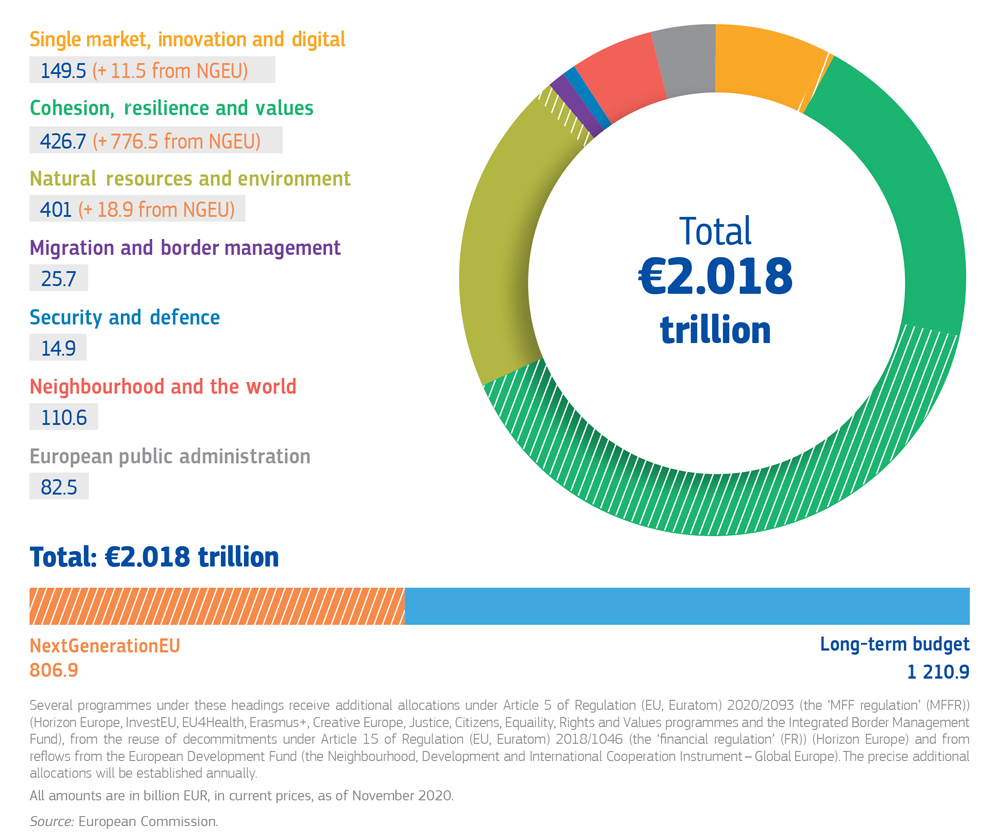
The Commission is responsible for managing and implementing the EU budget and the policies and programmes adopted by the Parliament and the Council. Most of the actual implementation and spending is done by national and local authorities, but the Commission is responsible for supervising it. The Commission handles the budget under the watchful eye of the European Court of Auditors. Both institutions aim to ensure sound financial management.
Every year, following a recommendation by the Council, the Parliament decides whether to give its final approval, or discharge, on the way the Commission has implemented the EU budget. This procedure ensures full accountability and transparency, and when granted the discharge leads to the formal closure of the accounts for a given year.
The European Court of Auditors is the independent external audit institution of the EU. It checks that the EU’s income has been received correctly, that its expenditure has been incurred in a legal and regular manner and that financial management has been sound. It performs its tasks independently from the other EU institutions and governments.
GETTING IN TOUCH WITH THE EU
In person
All over the European Union there are hundreds of Europe Direct centres. You can find the address of the centre nearest you online (european-union.europa.eu/contact-eu/meet-us_en).
On the phone or in writing
Europe Direct is a service that answers your questions about the European Union. You can contact this service:
- by freephone: 00 800 6 7 8 9 10 11 (certain operators may charge for these calls),
- at the following standard number: +32 22999696,
- via the following form: european-union.europa.eu/contact-eu/write-us_en.
FINDING INFORMATION ABOUT THE EU
Online
Information about the European Union in all the official languages of the EU is available on the Europa website (european-union.europa.eu).
EU publications
You can view or order EU publications at op.europa.eu/en/publications. Multiple copies of free publications can be obtained by contacting Europe Direct or your local documentation centre (european-union.europa.eu/contact-eu/meet-us_en).
EU law and related documents
For access to legal information from the EU, including all EU law since 1951 in all the official language versions, go to EUR-Lex (eur-lex.europa.eu).
Open data from the EU
The portal data.europa.eu provides access to open datasets from the EU institutions, bodies and agencies. These can be downloaded and reused for free, for both commercial and non-commercial purposes. The portal also provides access to a wealth of datasets from European countries.
About
The European Union – What it is and what it does
European Commission
Directorate-General for Communication
Editorial Service & Targeted Outreach
Rue de la Loi/Wetstraat 56
1049 Bruxelles/Brussel
BELGIQUE/BELGIË
Manuscript completed in March 2022
This document should not be considered as representative of the European Commission’s official position.
Luxembourg: Publications Office of the European Union, 2022
© European Union, 2022
Reuse is authorised provided the source is acknowledged.
The reuse policy of European Commission documents is regulated by Decision 2011/833/EU (OJ L 330, 14.12.2011, p. 39).
For any use or reproduction of photos or other material that is not under the copyright of the European Union, permission must be sought directly from the copyright holders.
All pictures: © Shutterstock, © Fotolia and © Adobe Stock except for photos on the following pages: COVID-19 response; European Green Deal; Jobs, growth and investment; Tax and customs; Space; EU neighbourhood and enlargement; Fundamental rights; Justice and the rule of law; Gender equality; Racism and equality; LGBTIQ equality; Disability; Over 50s; A safer internet; Citizens and democracy; Home affairs and citizens’ security; Culture, media and sport: © European Union.
Identifiers
| ISBN 978-92-76-24640-4 | doi:10.2775/195467 | NA-04-20-632-EN-C | |
| ISBN 978-92-76-24621-3 | doi:10.2775/5377 | NA-04-20-632-EN-N | |
| HTML | ISBN 978-92-76-24592-6 | doi:10.2775/946008 | NA-04-20-632-EN-Q |

